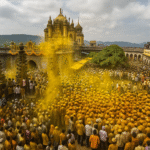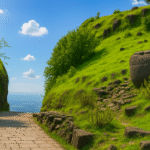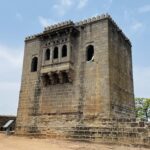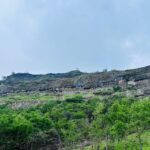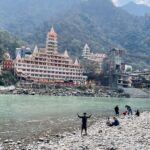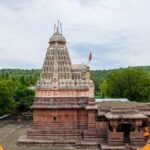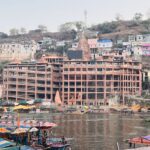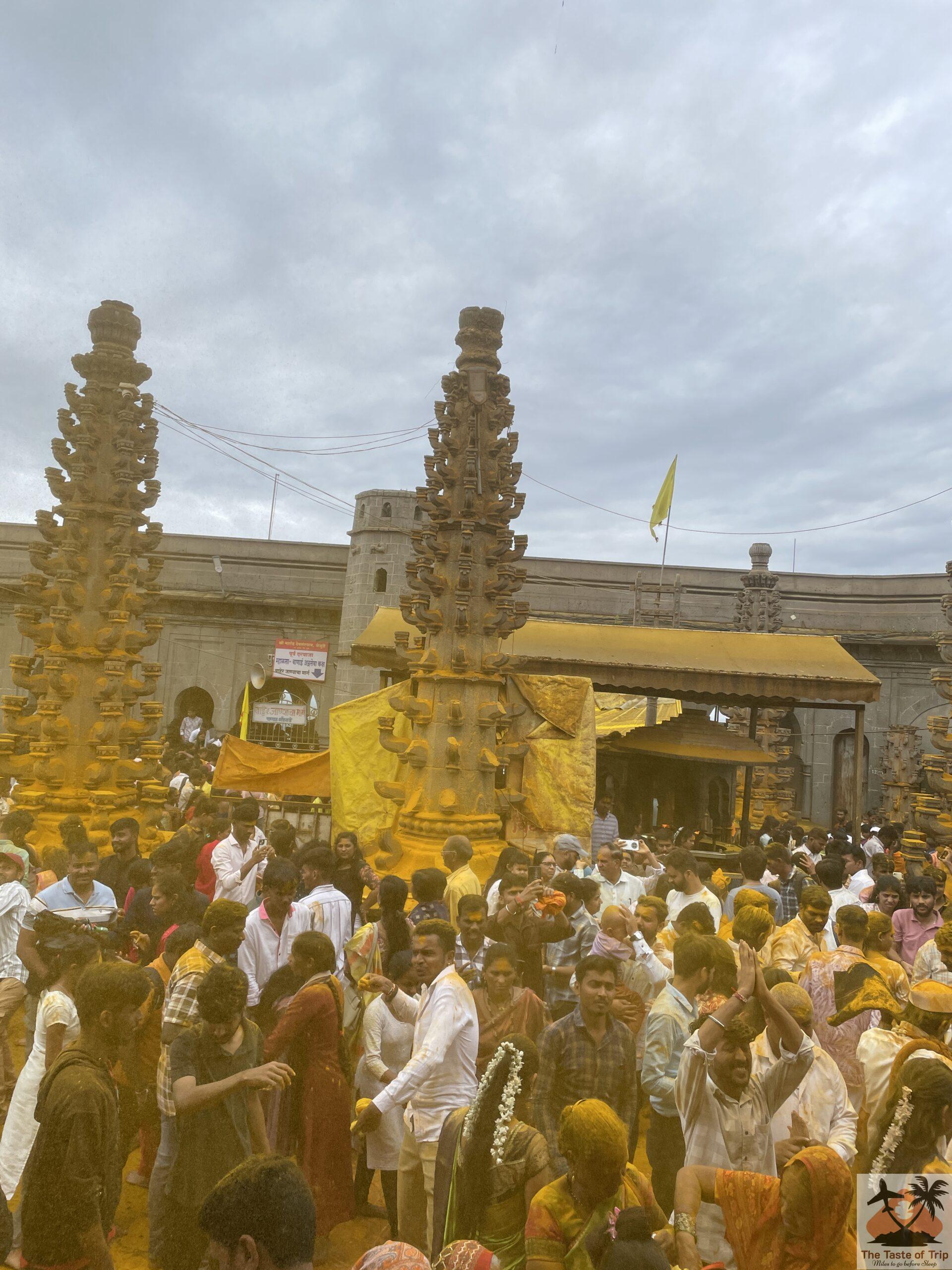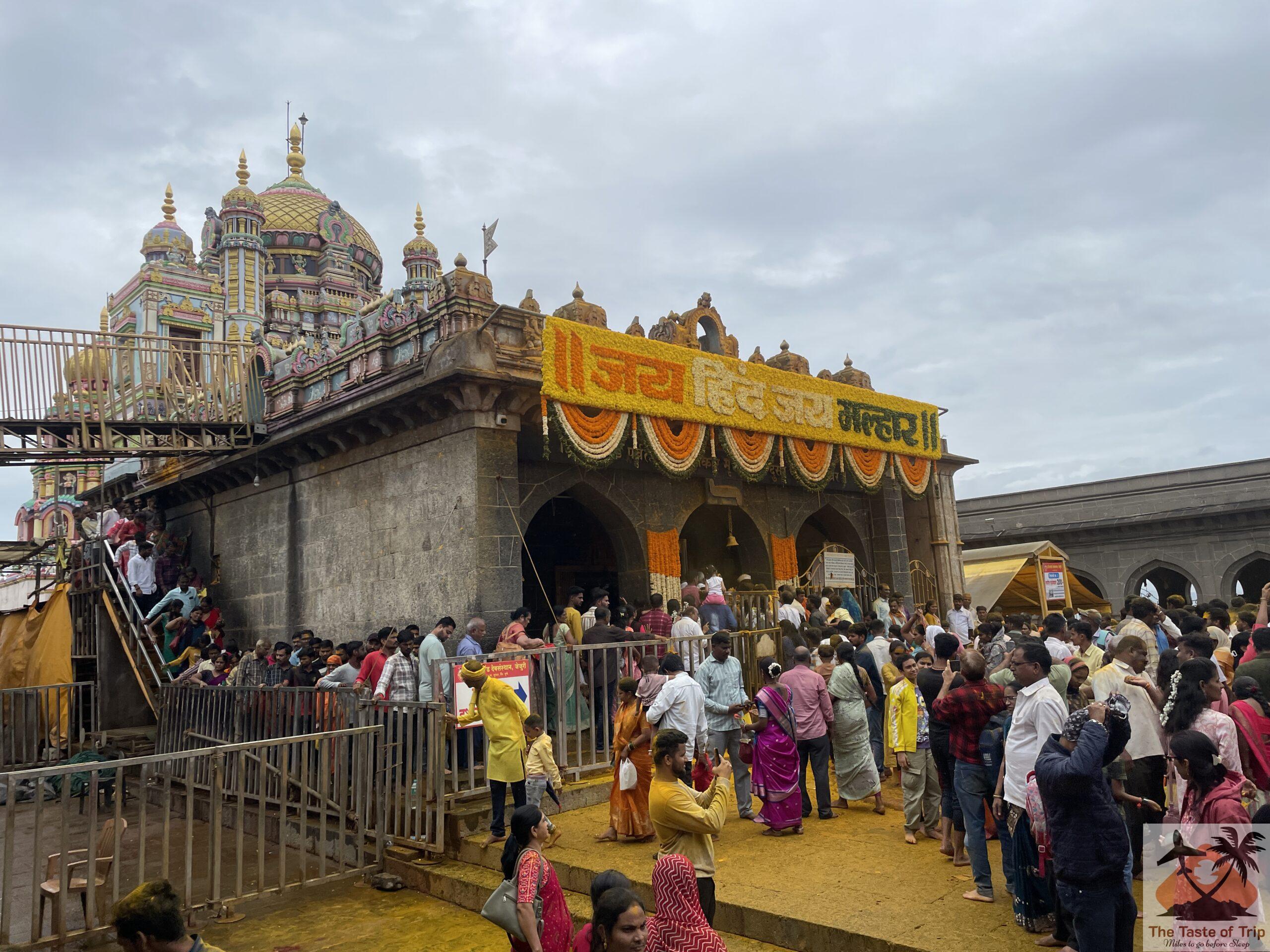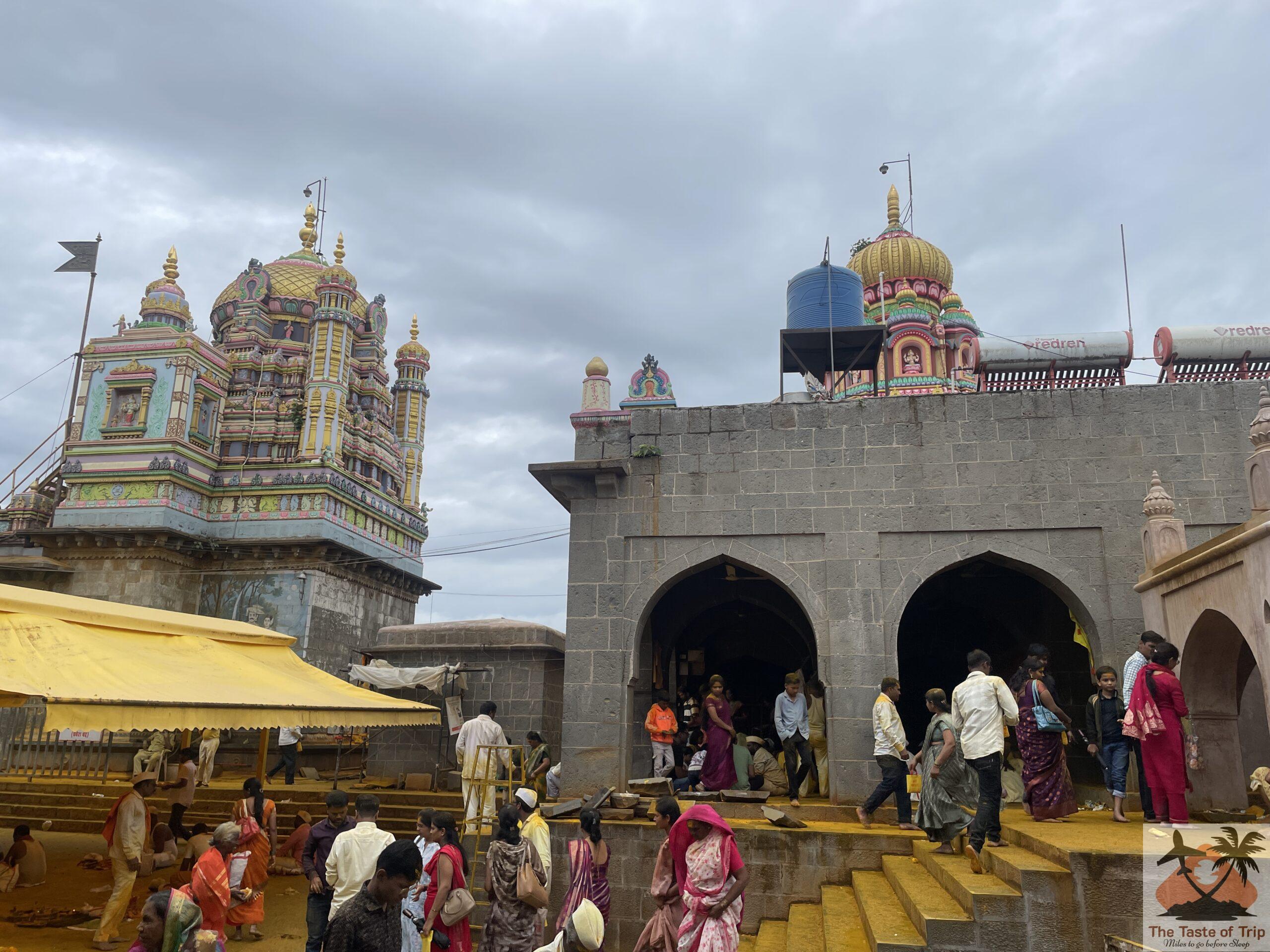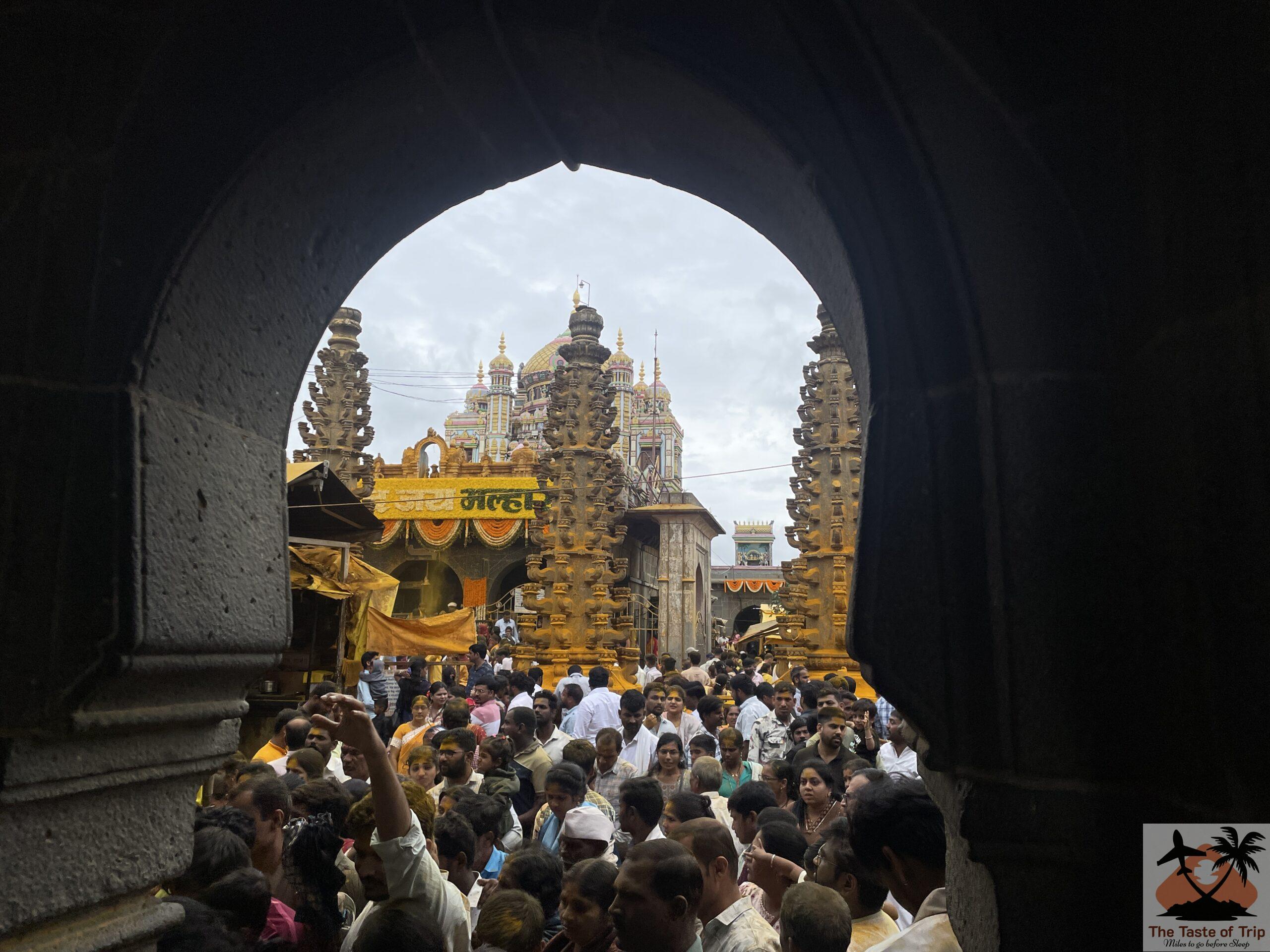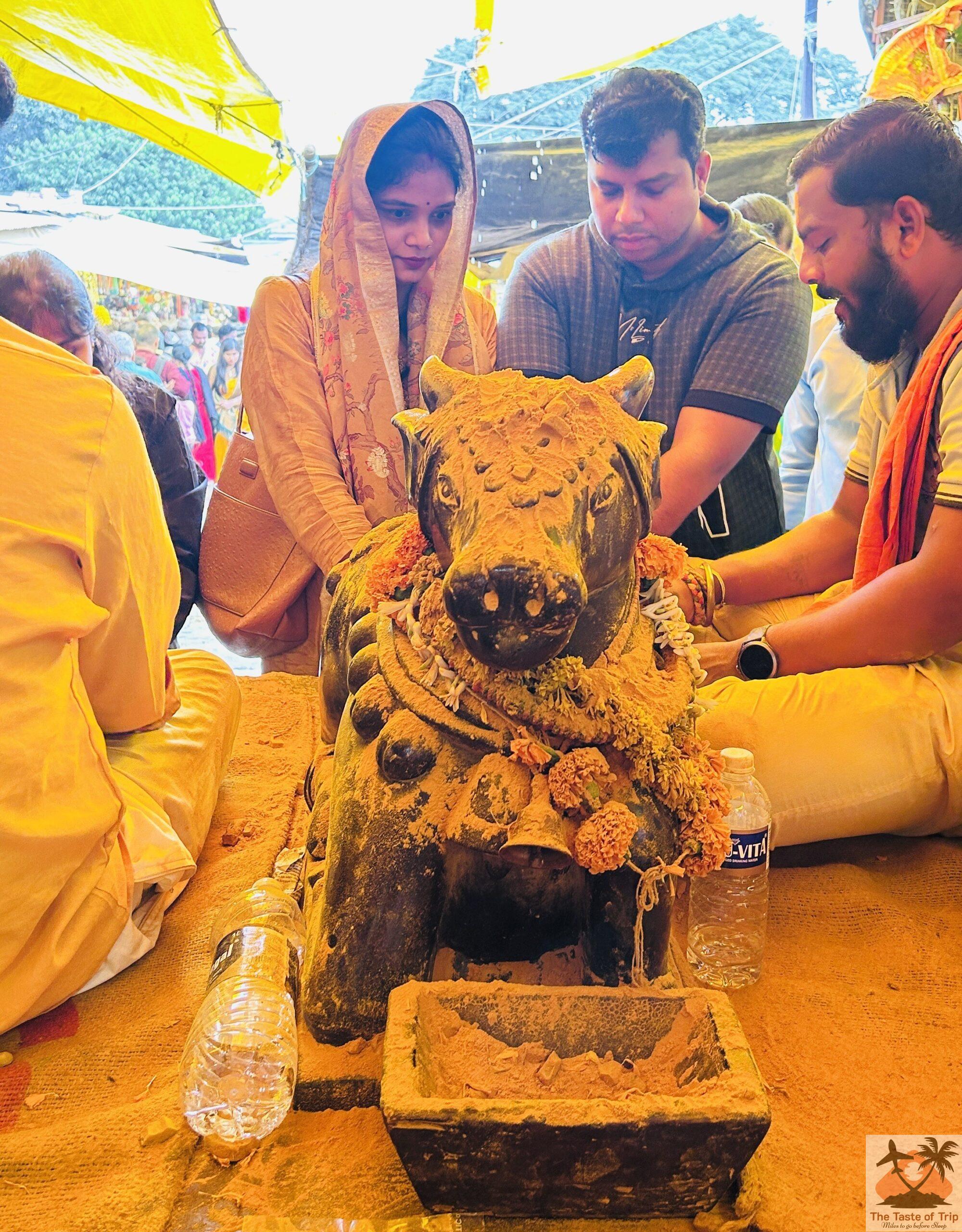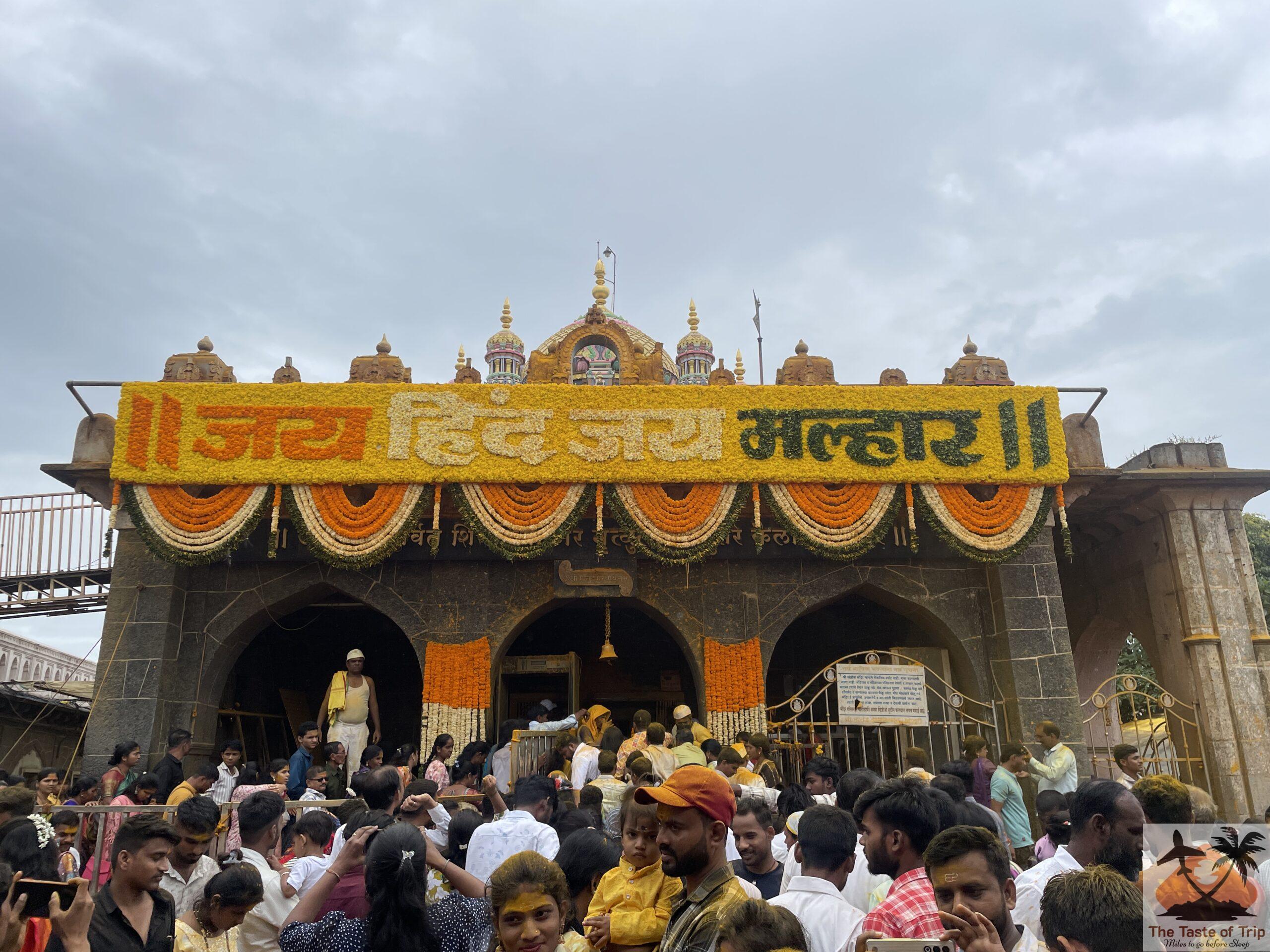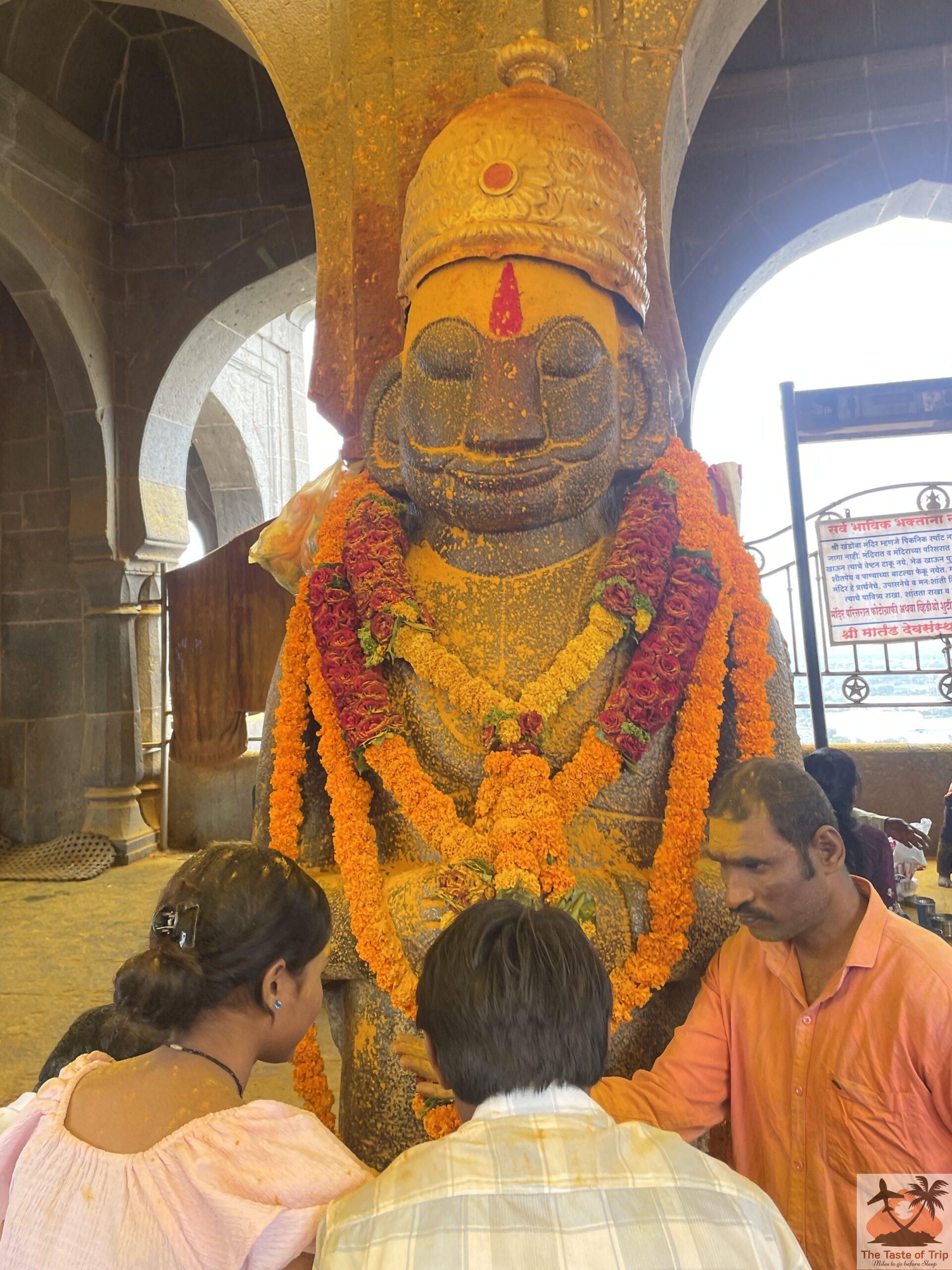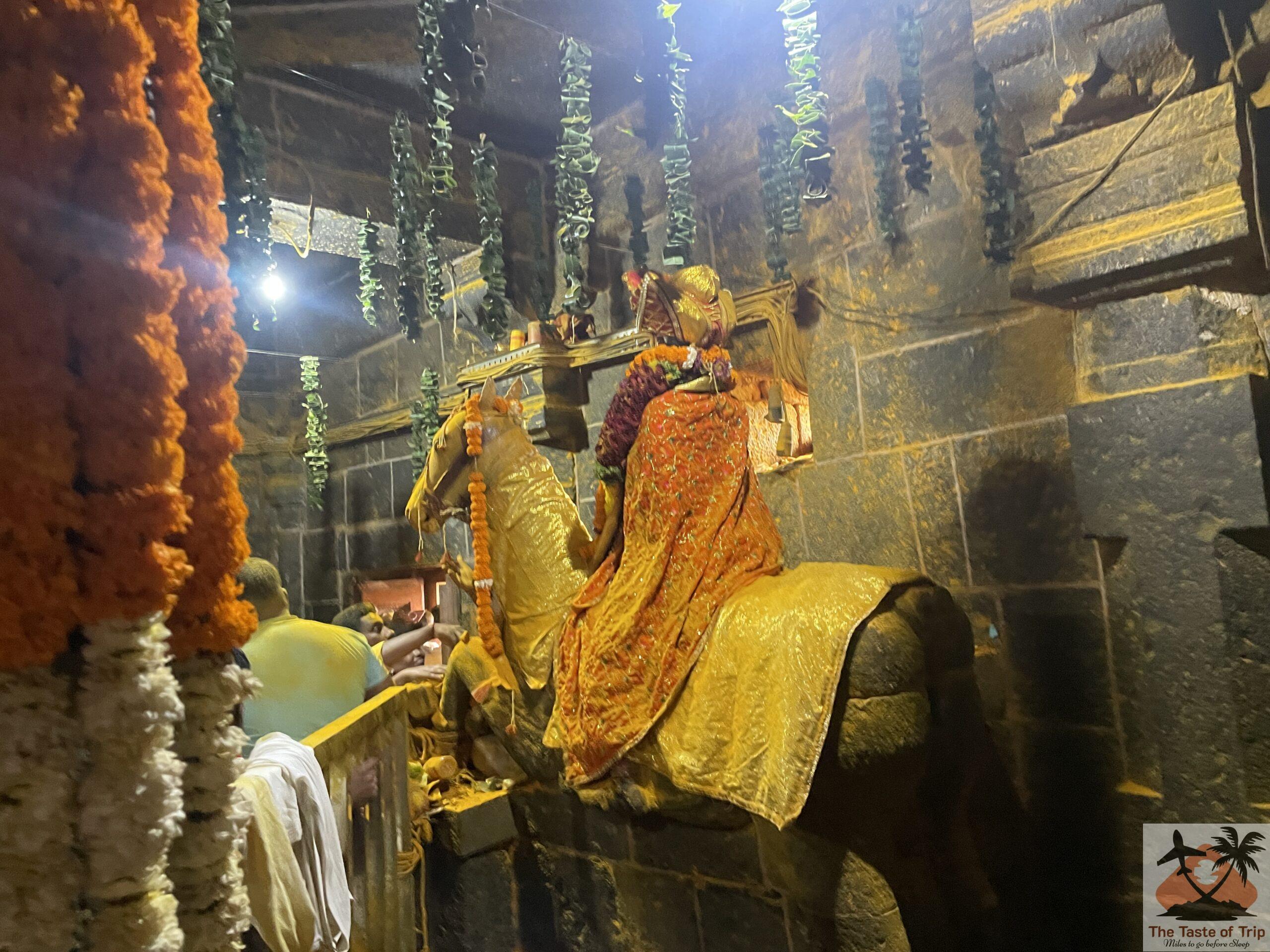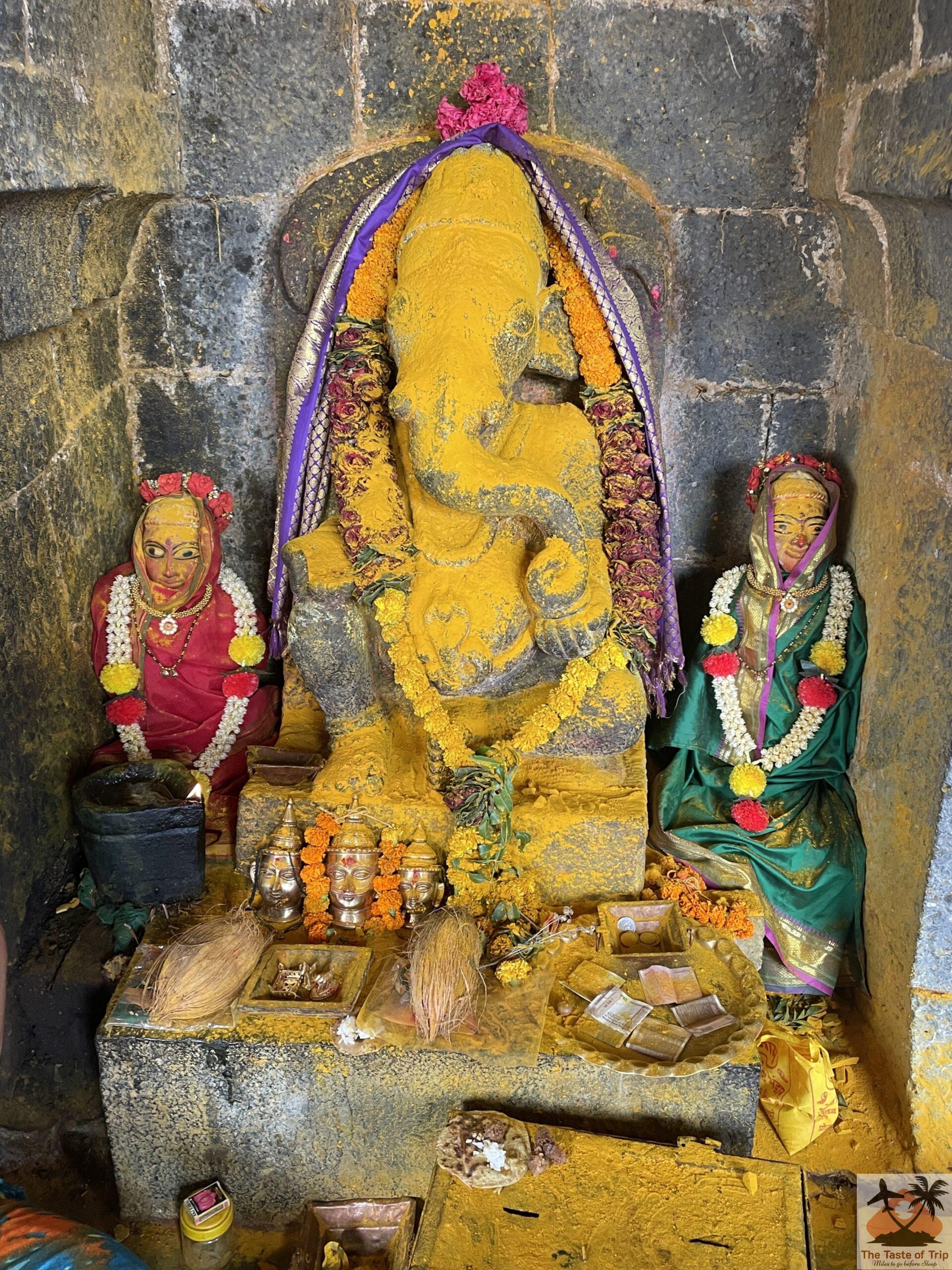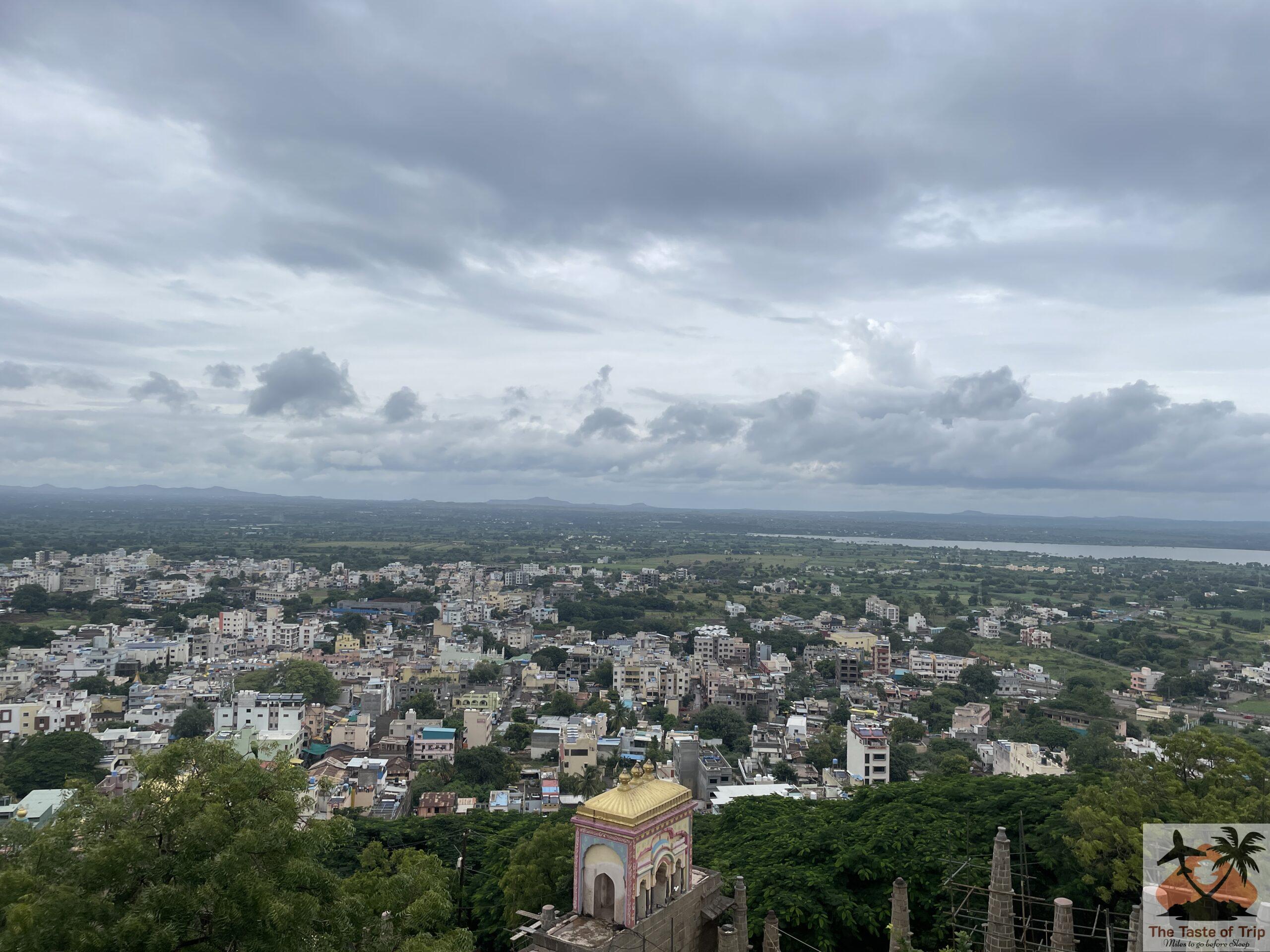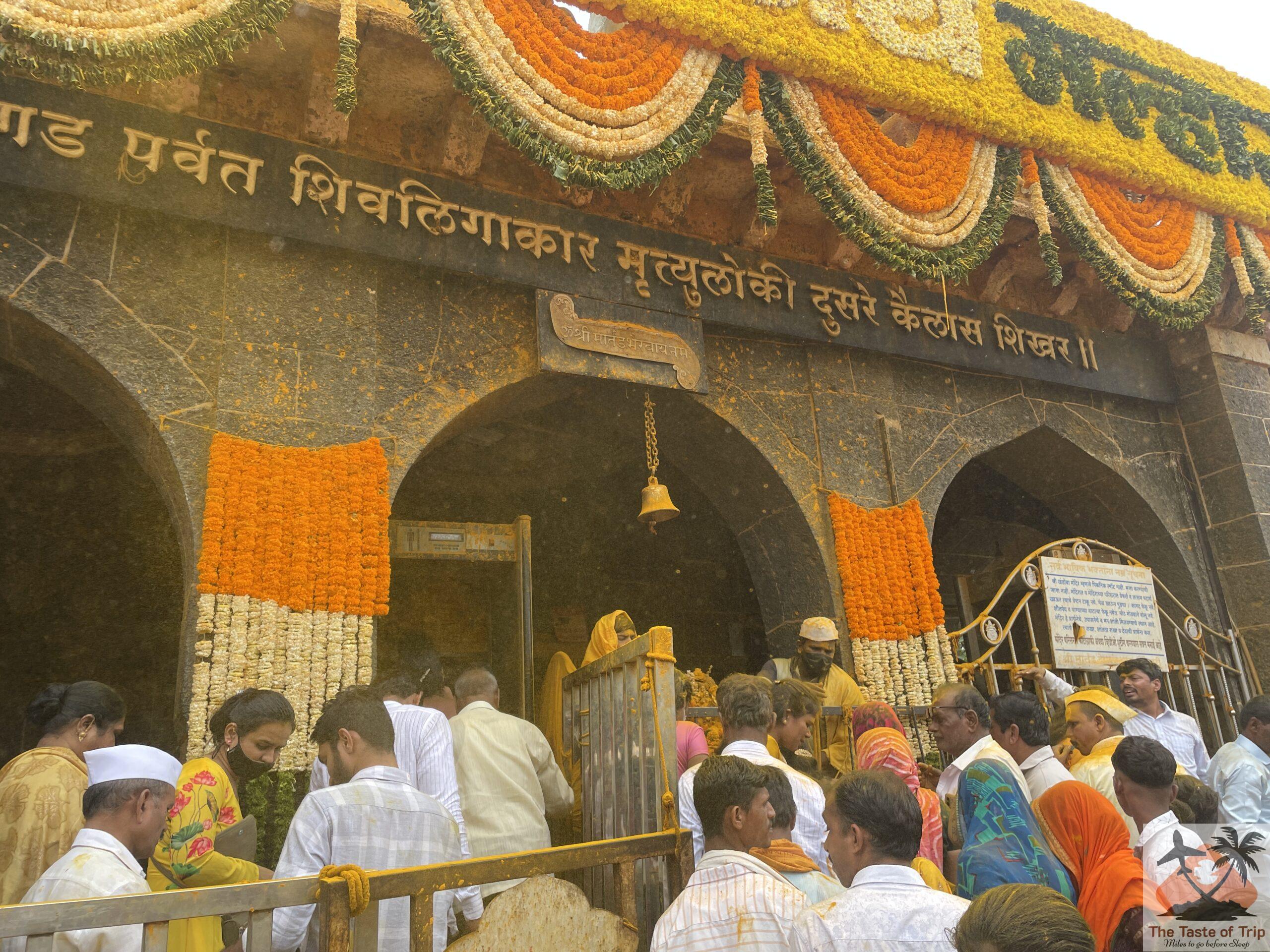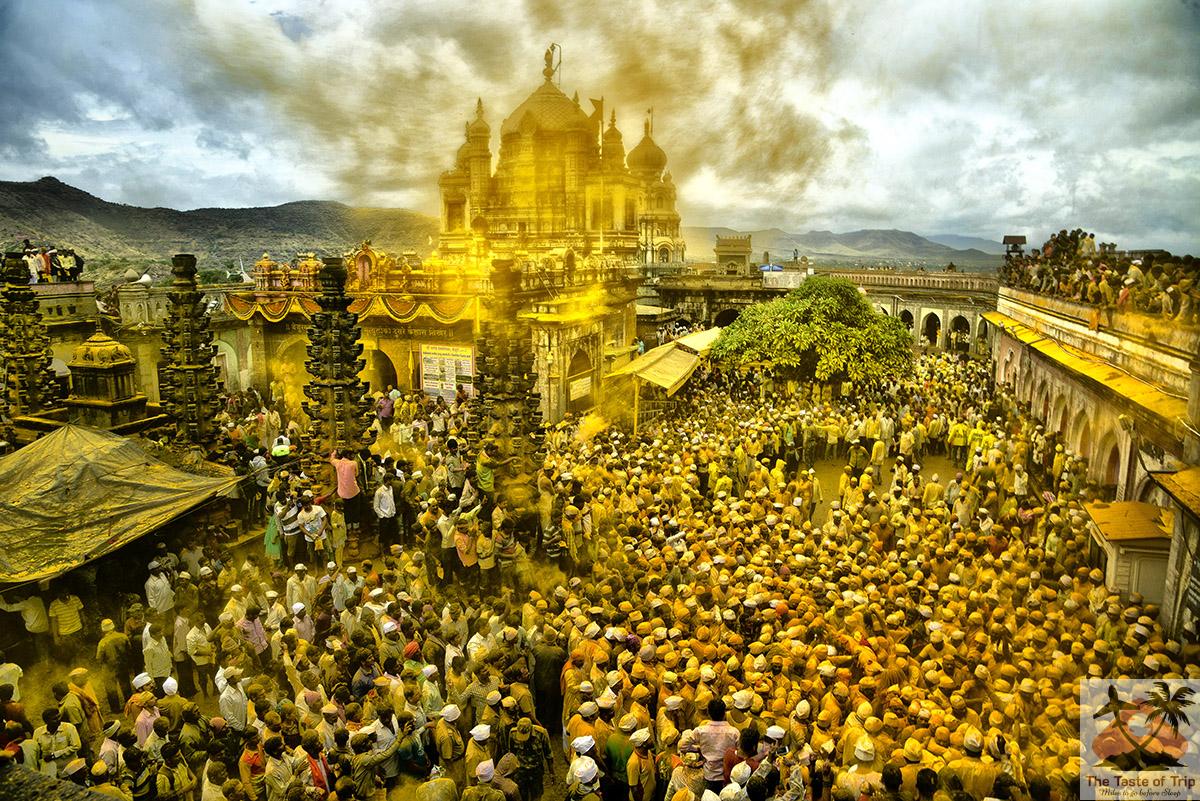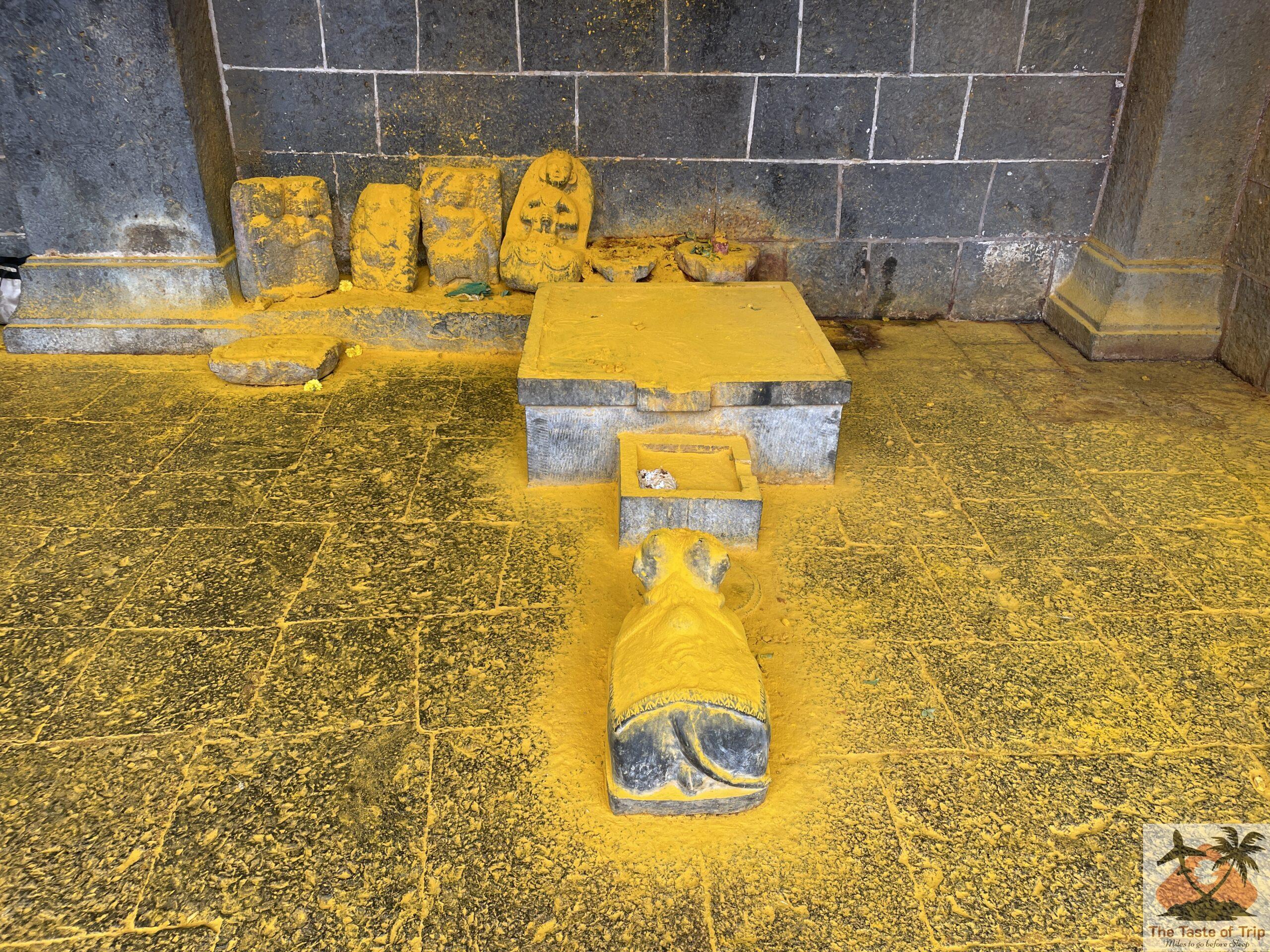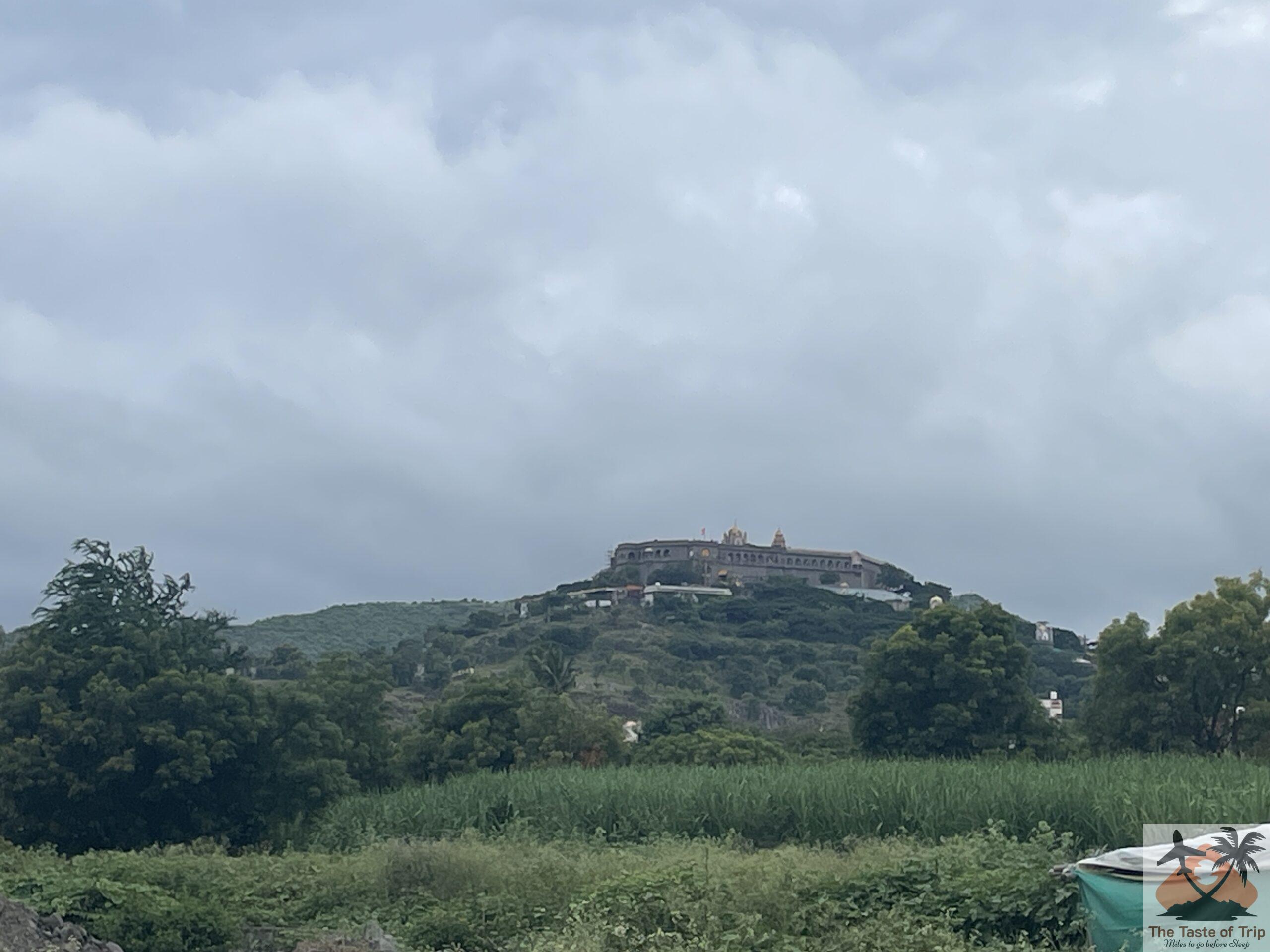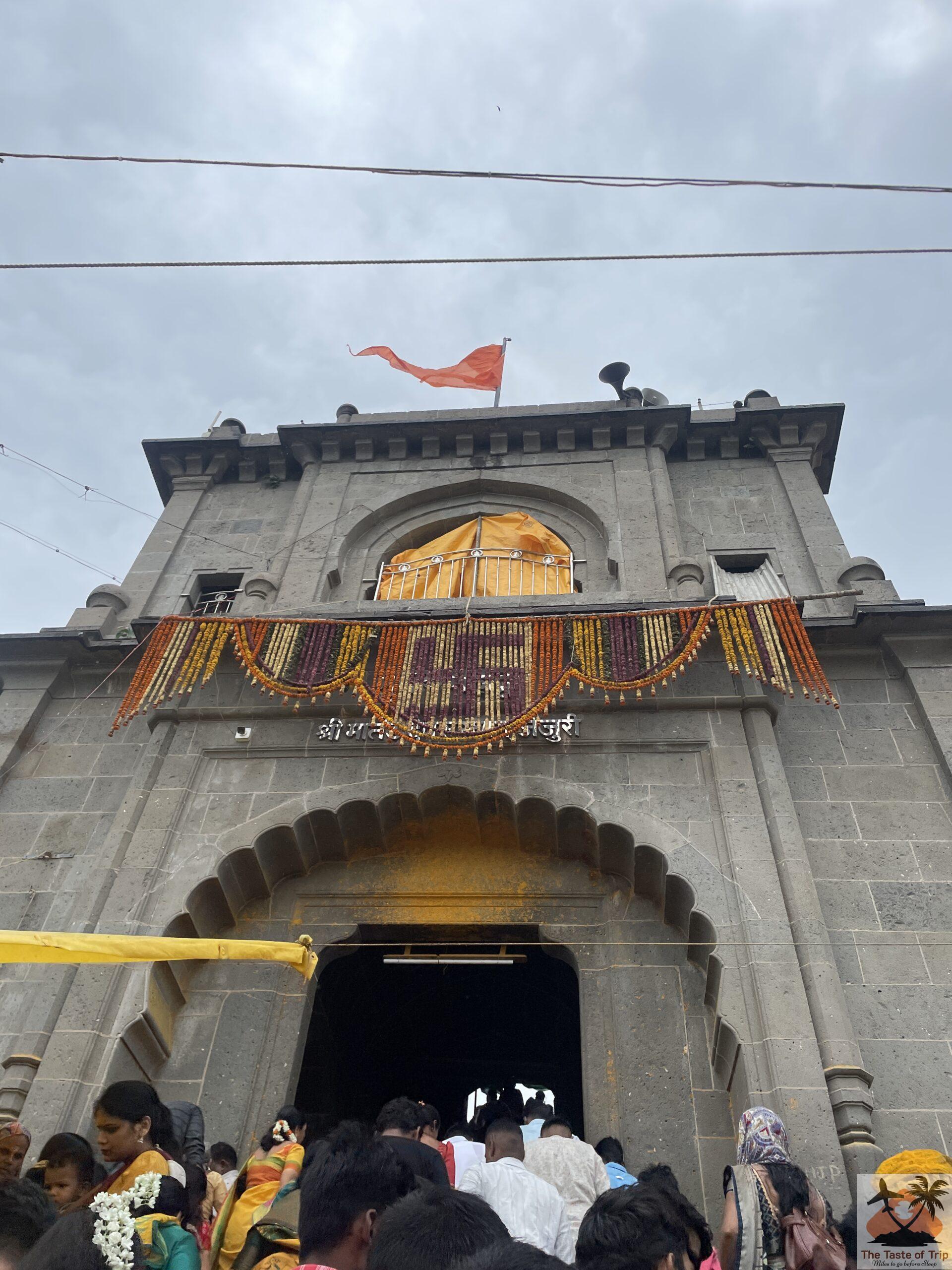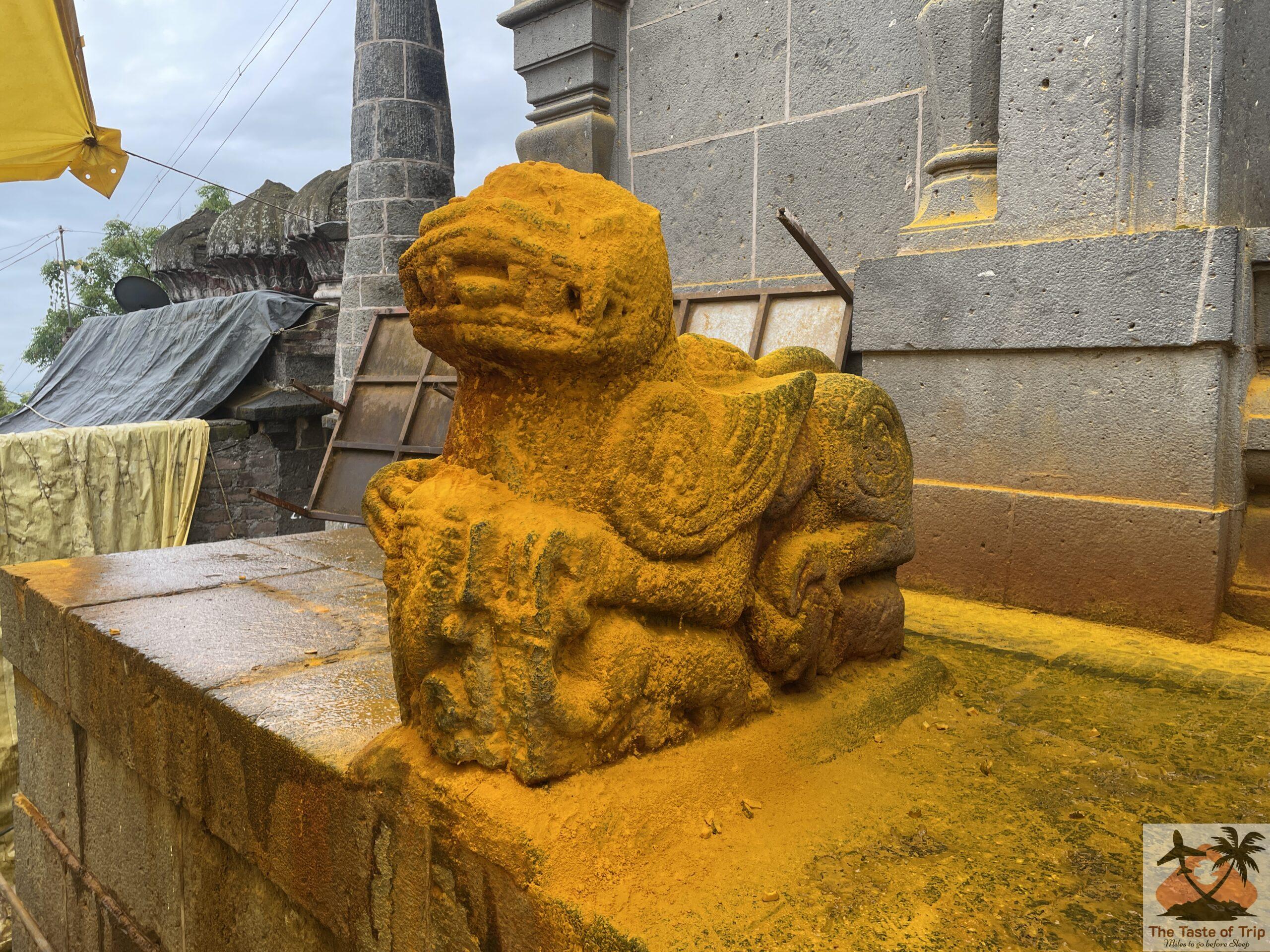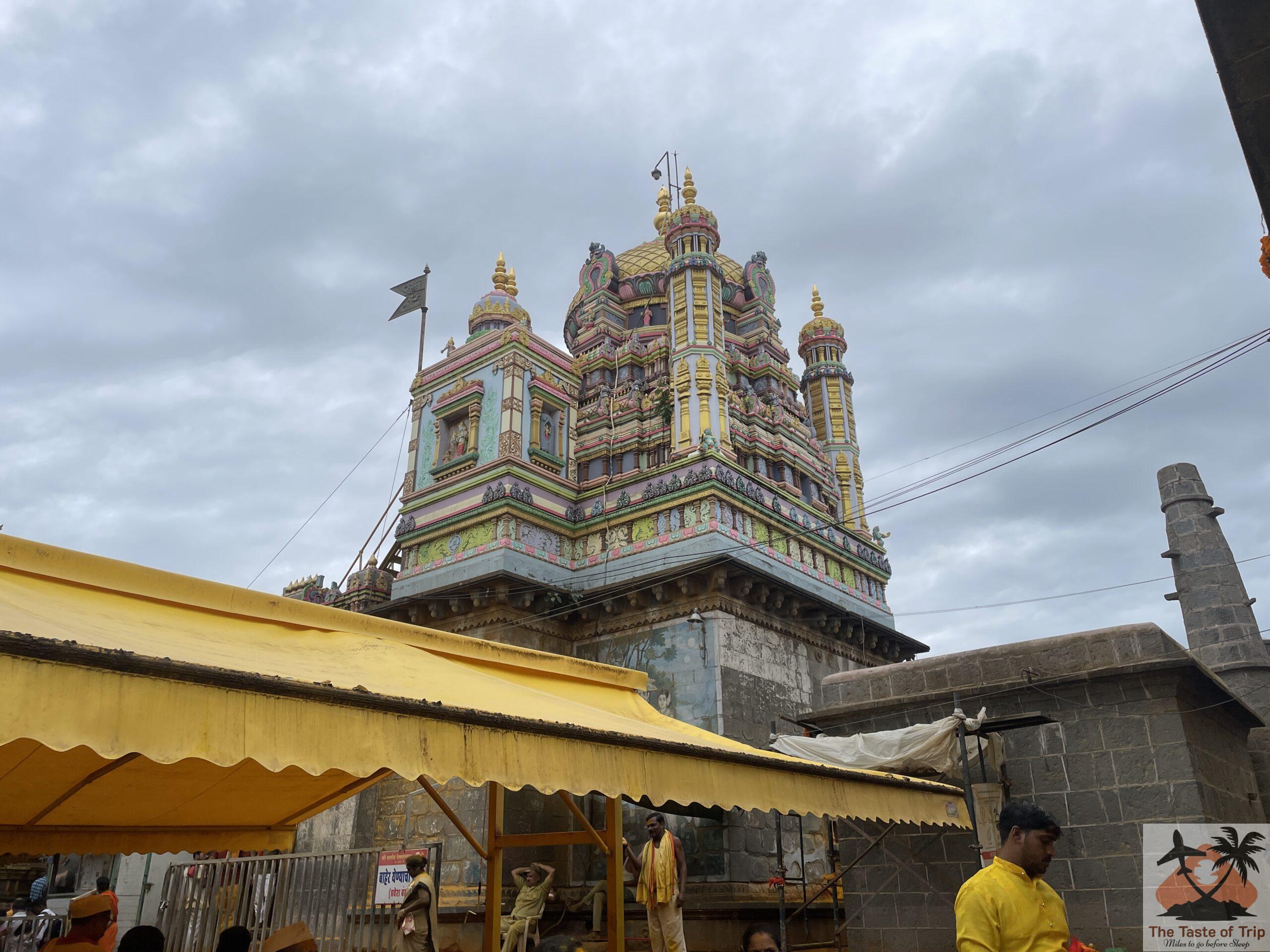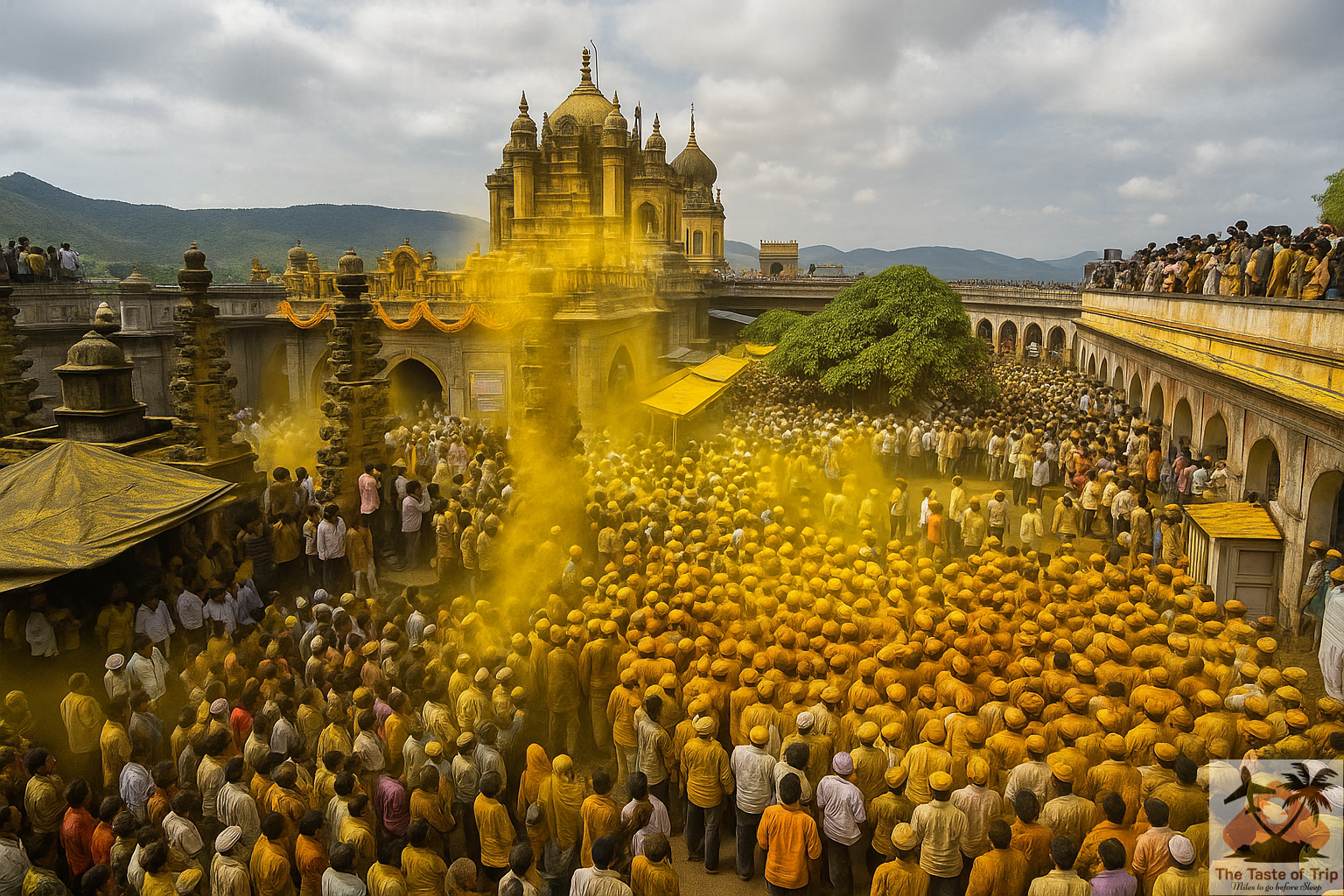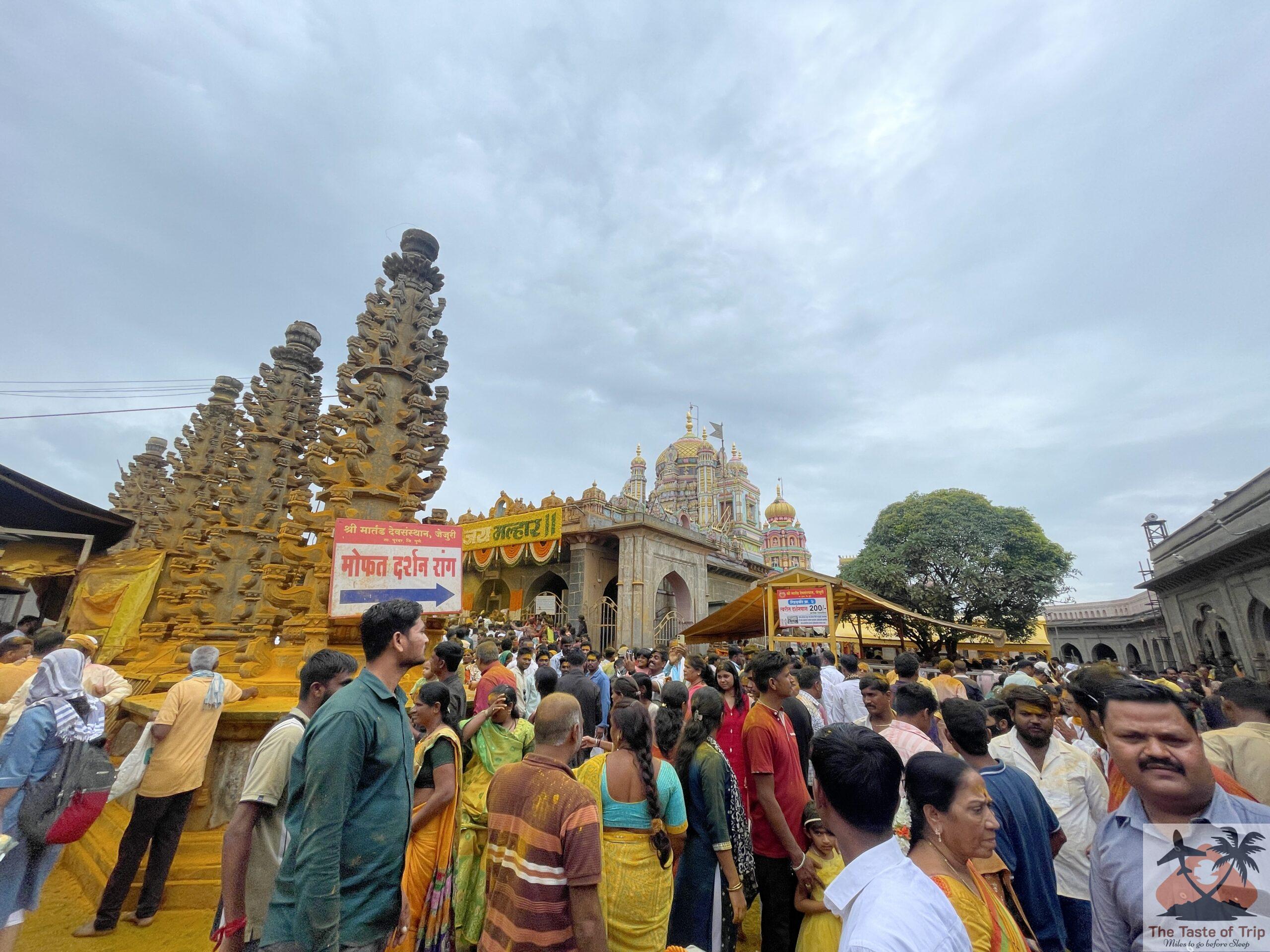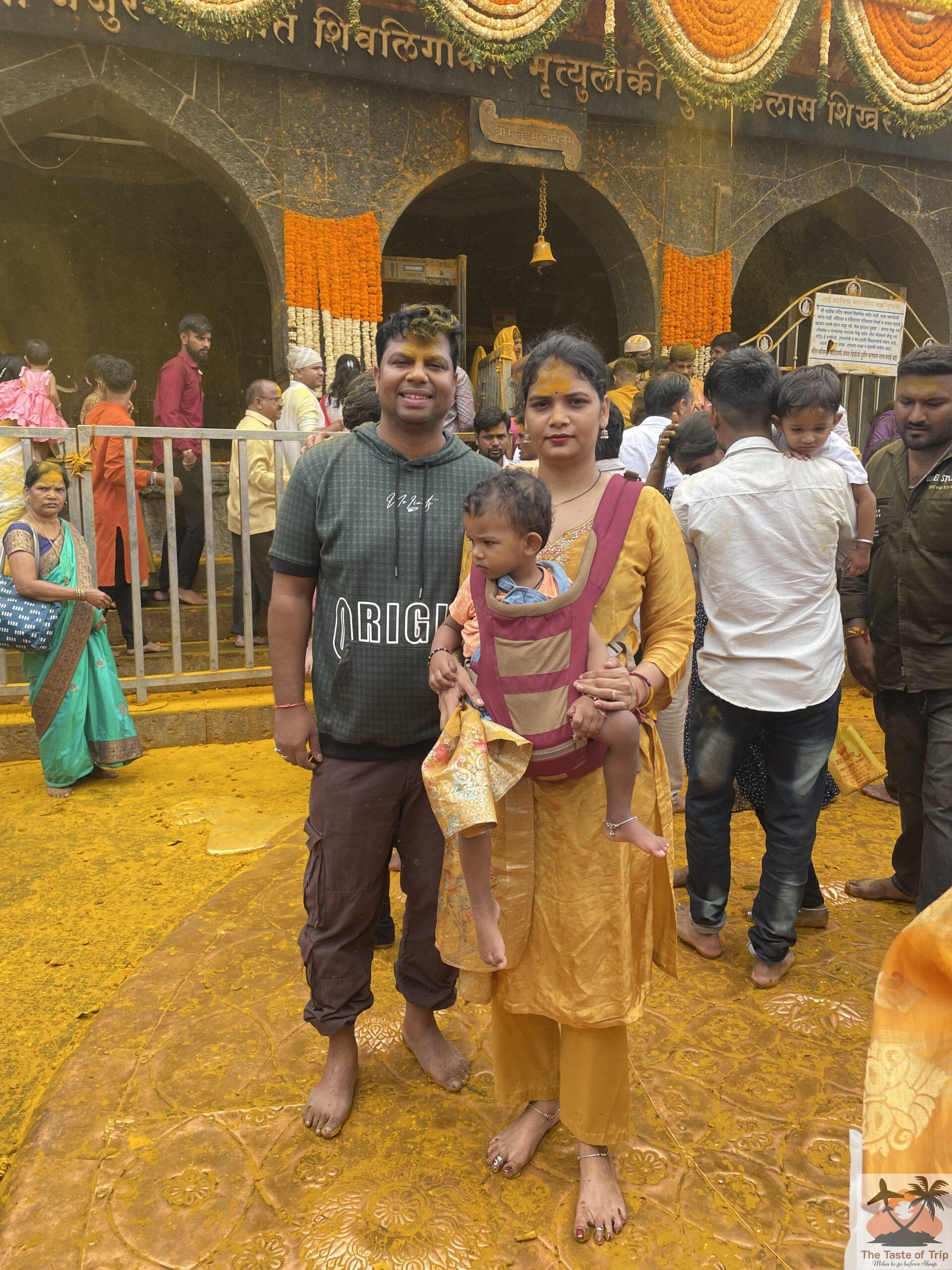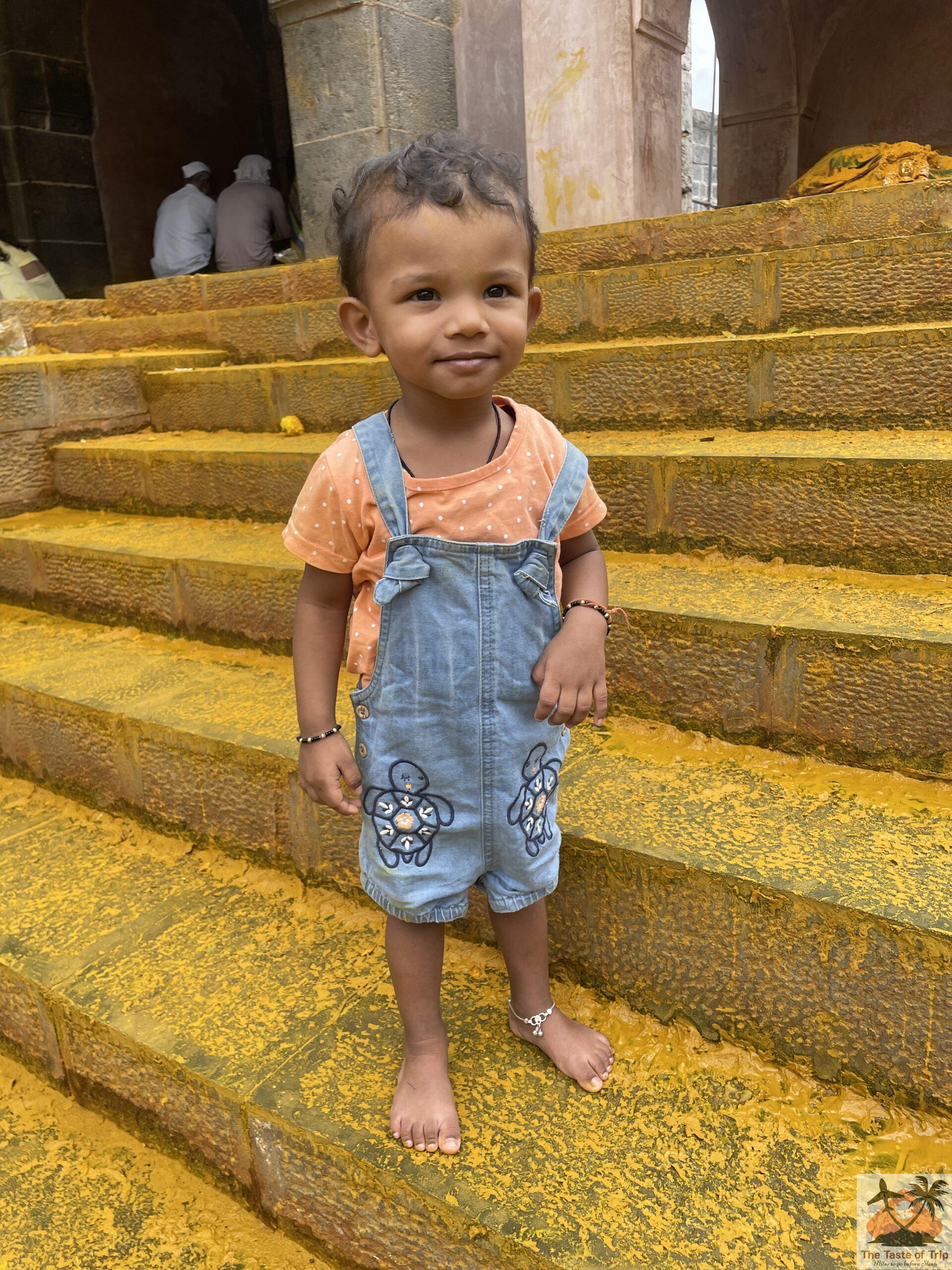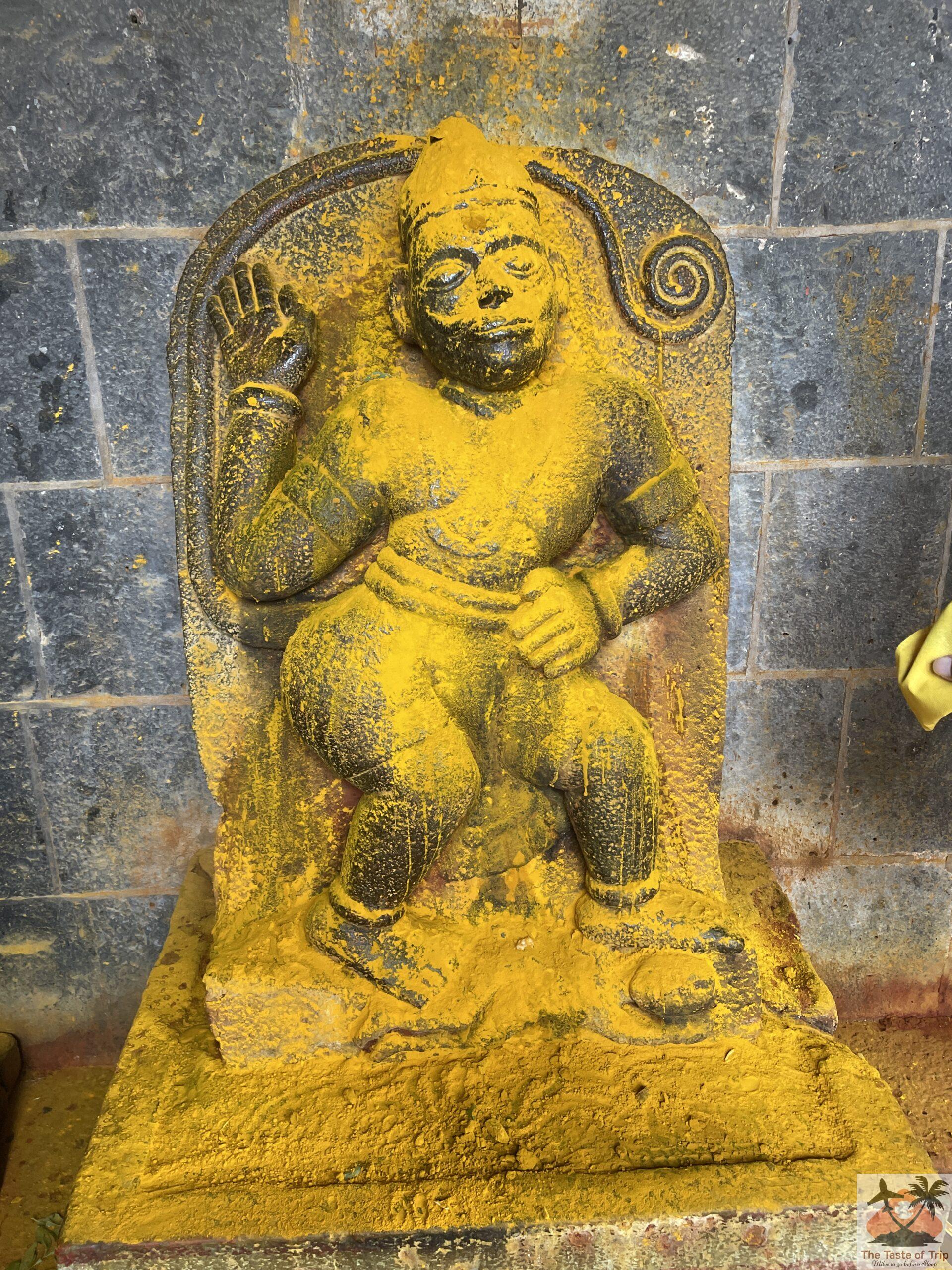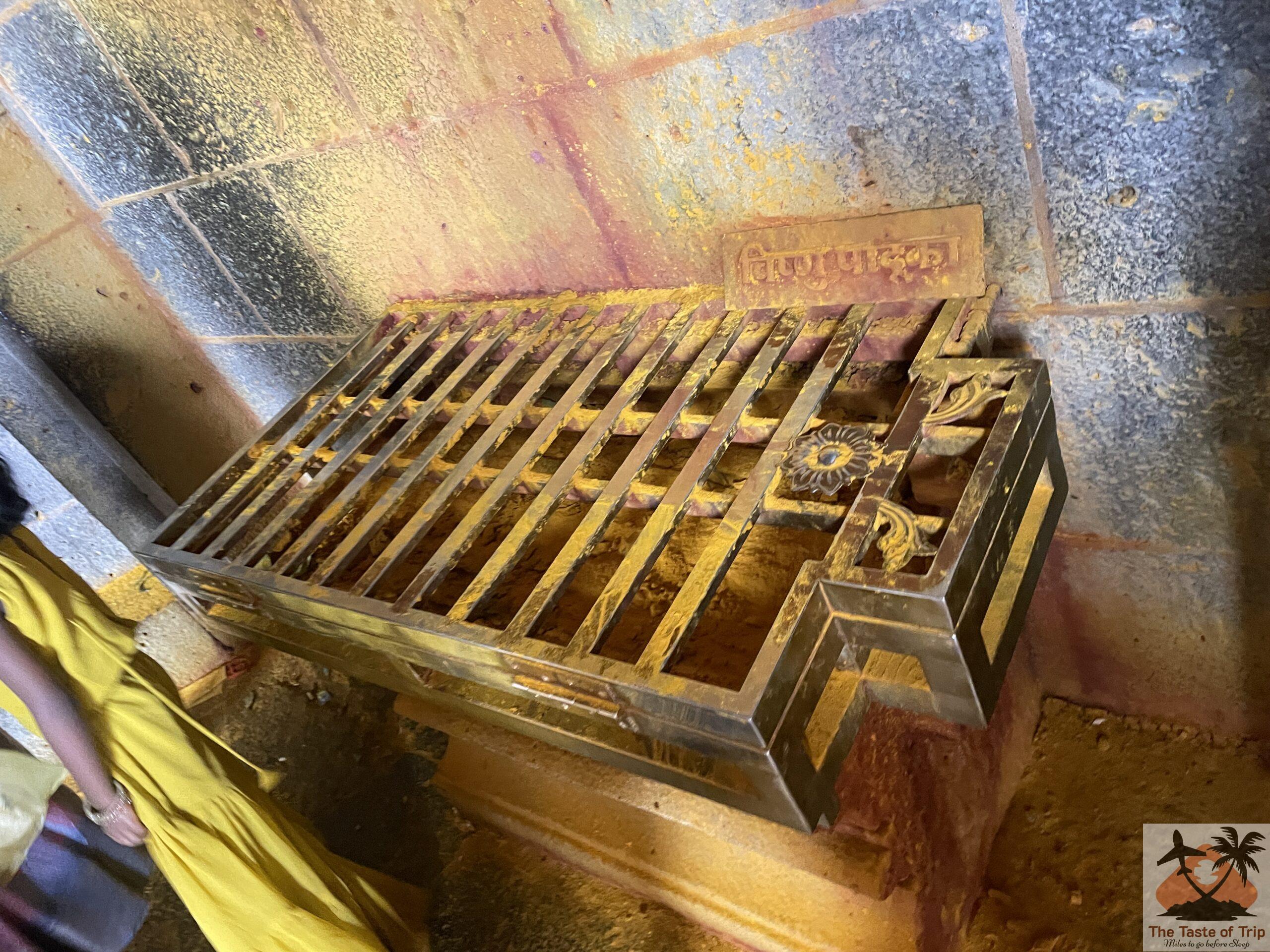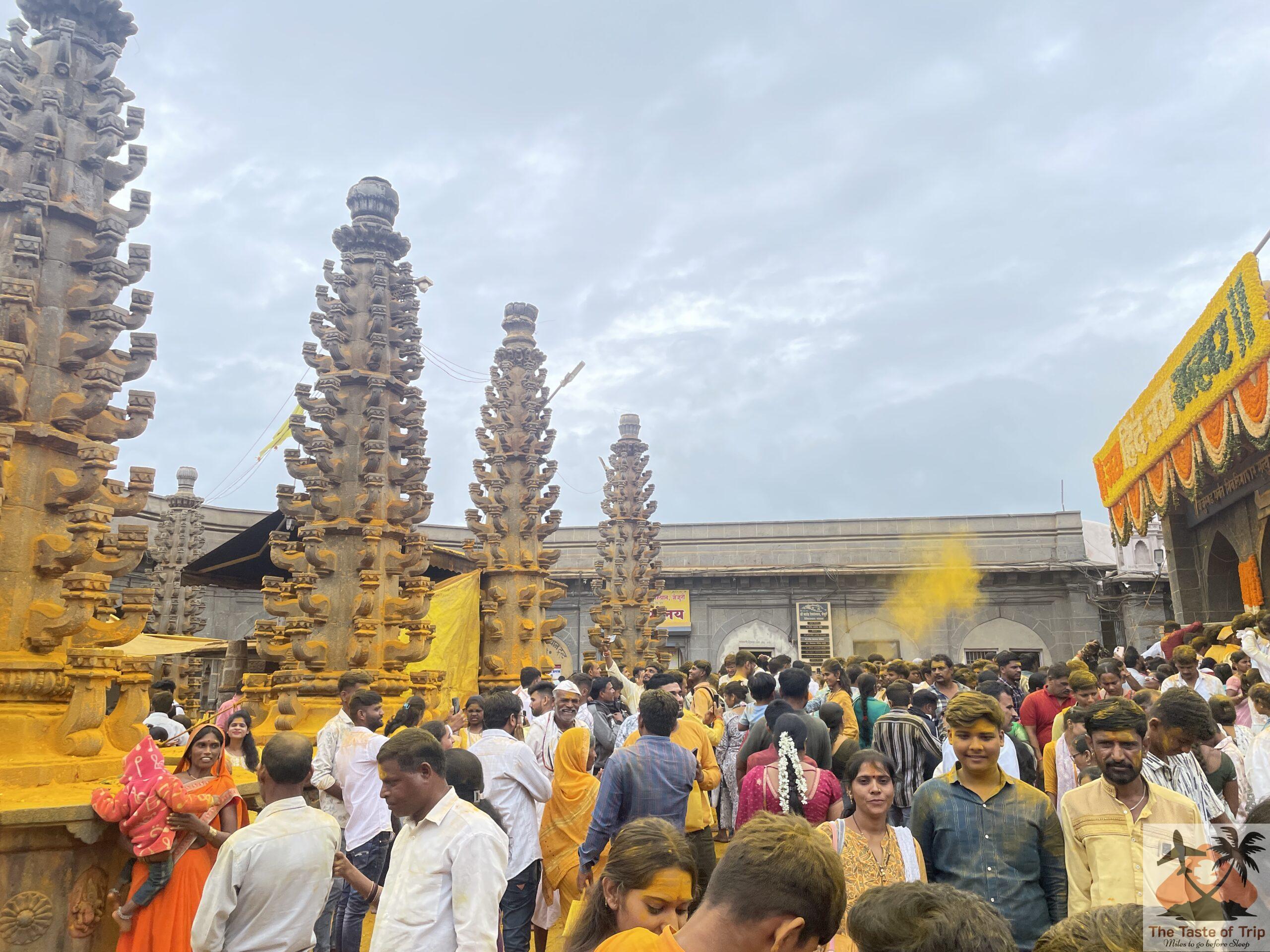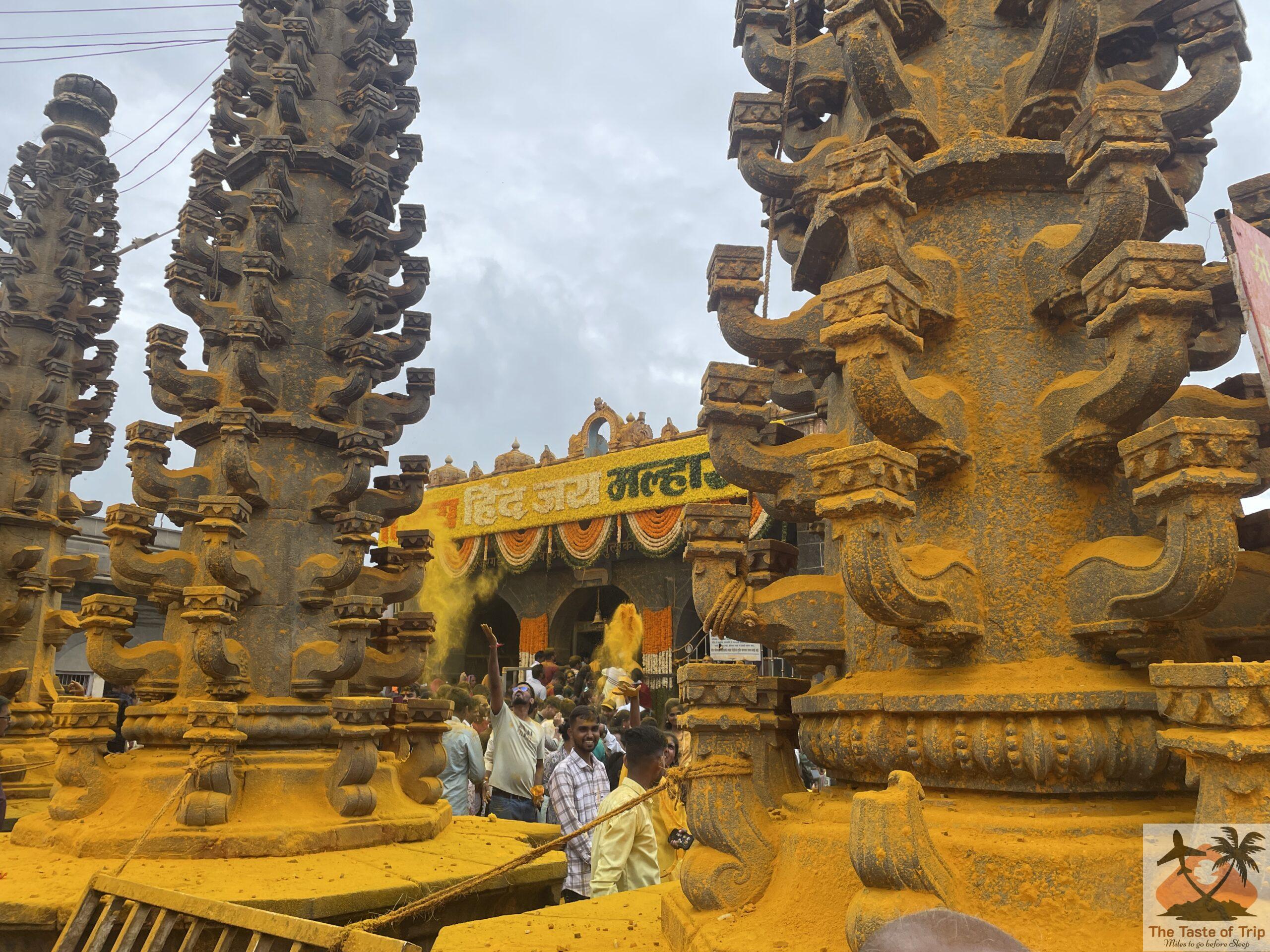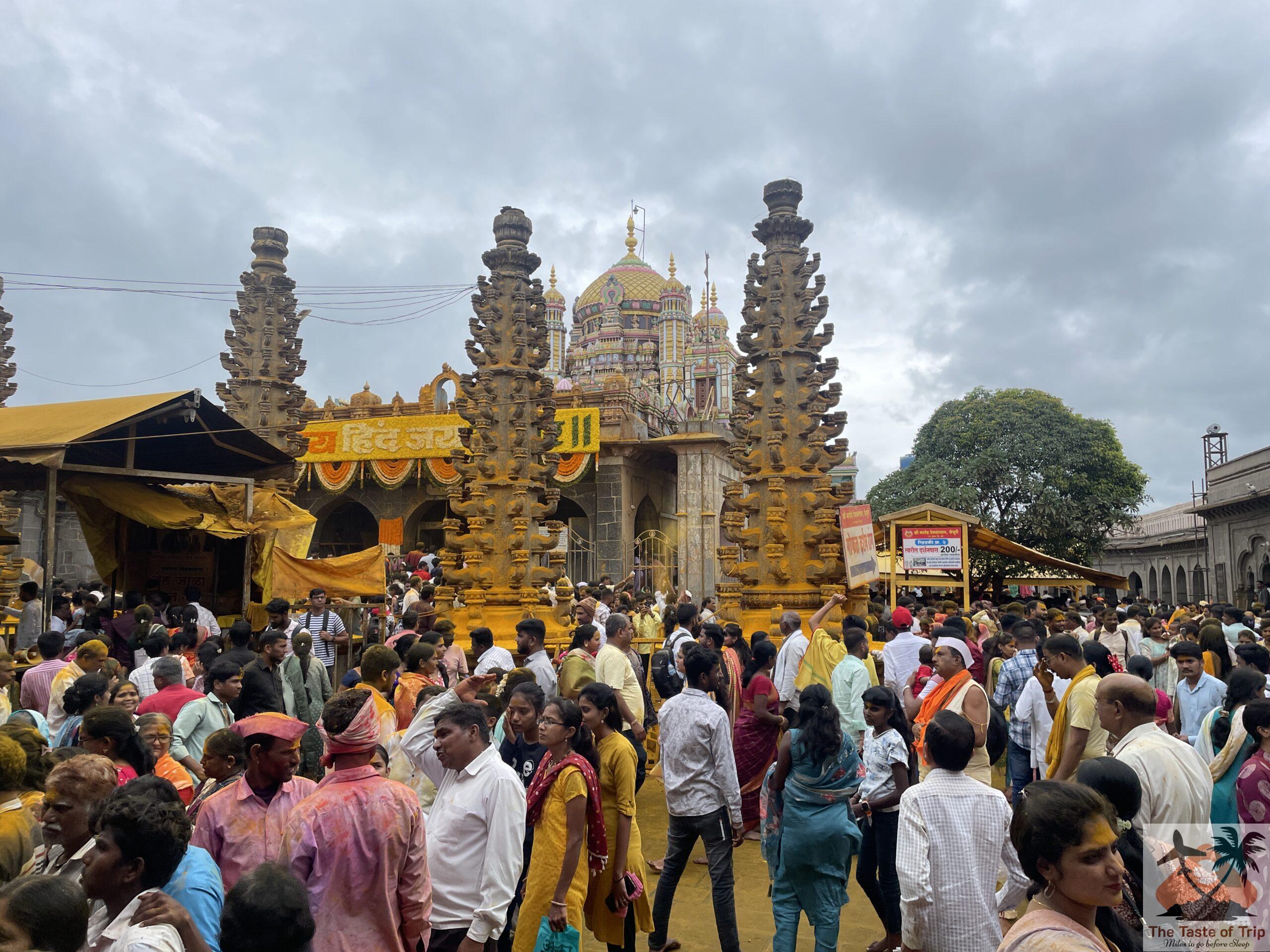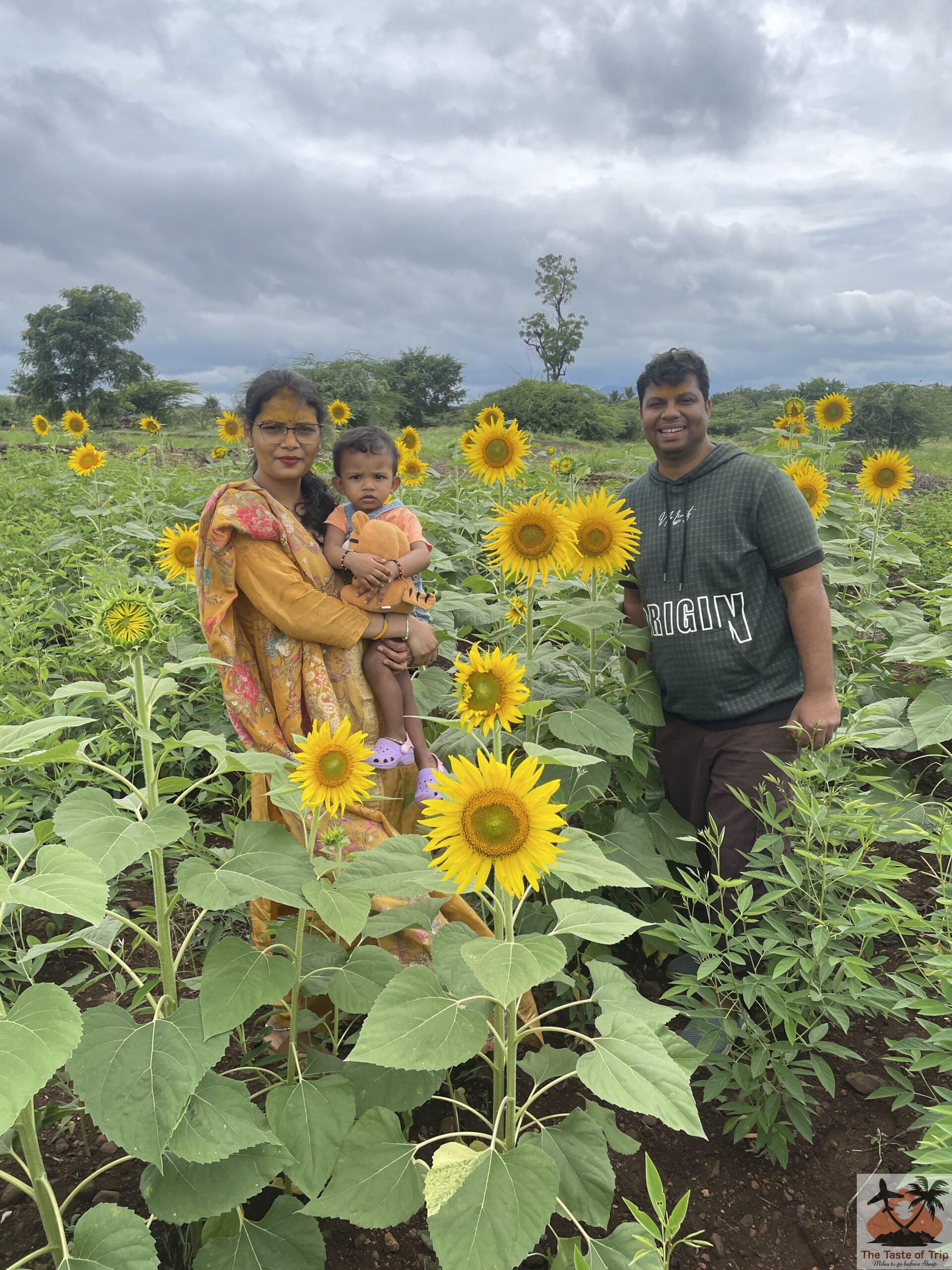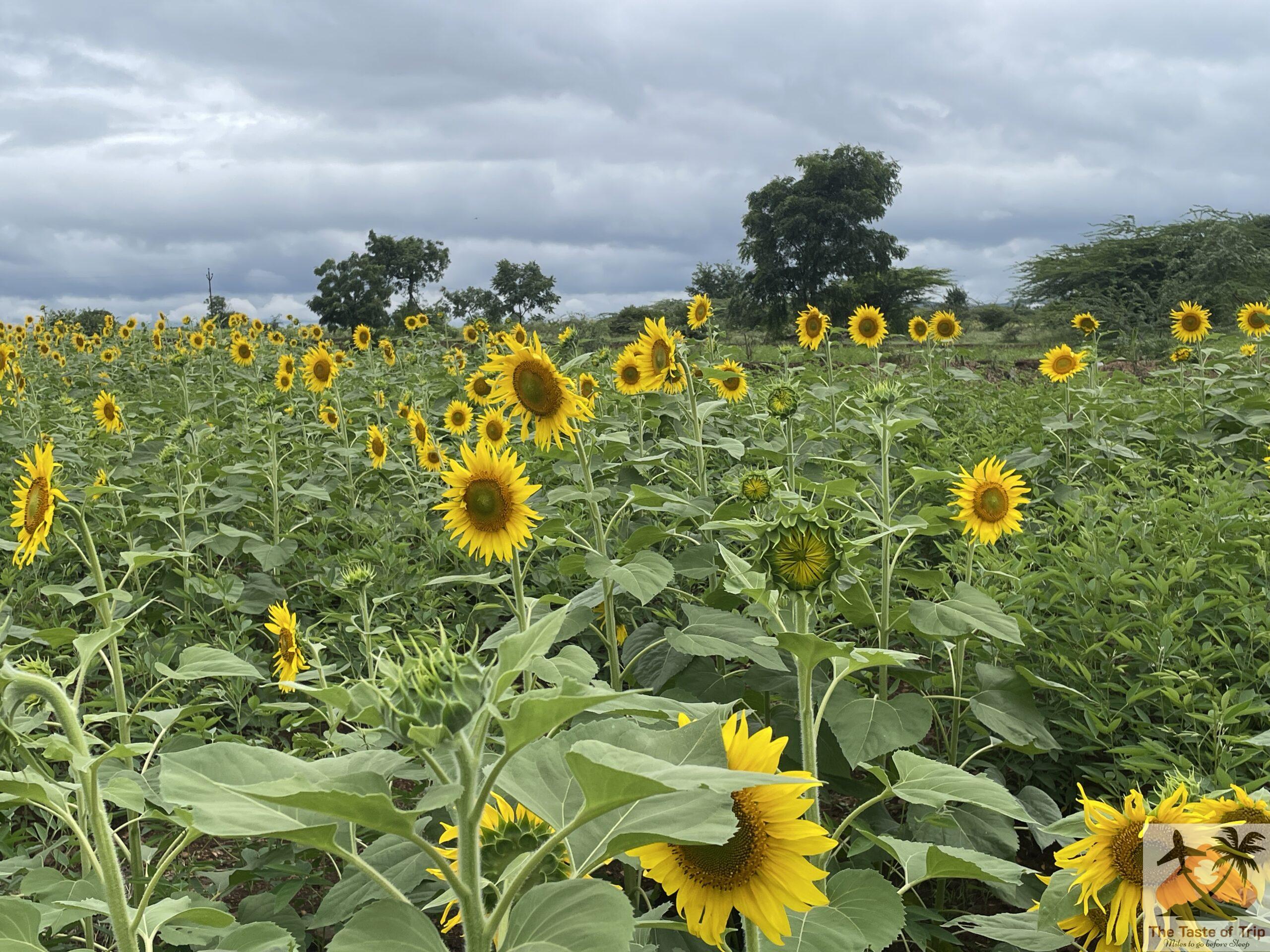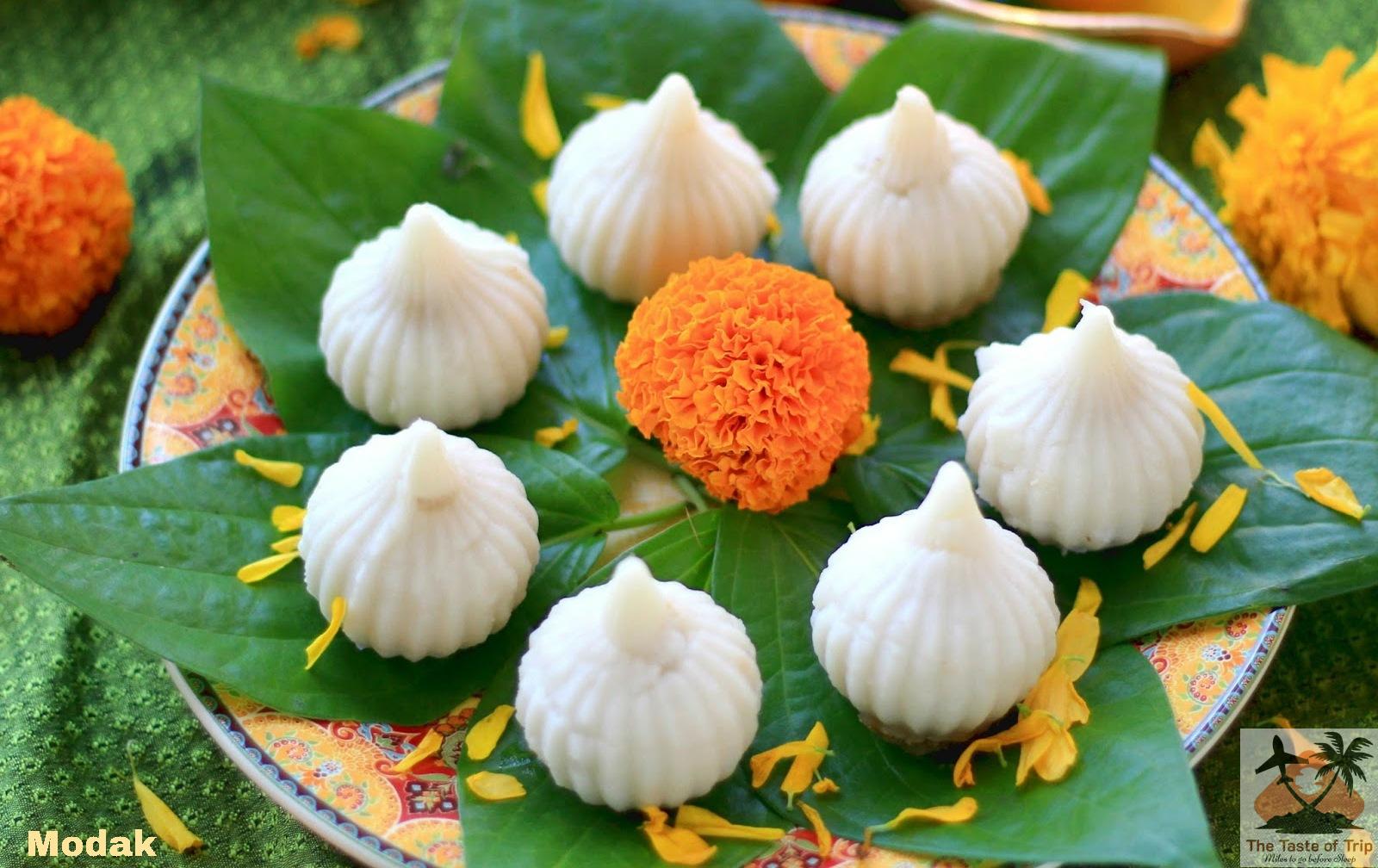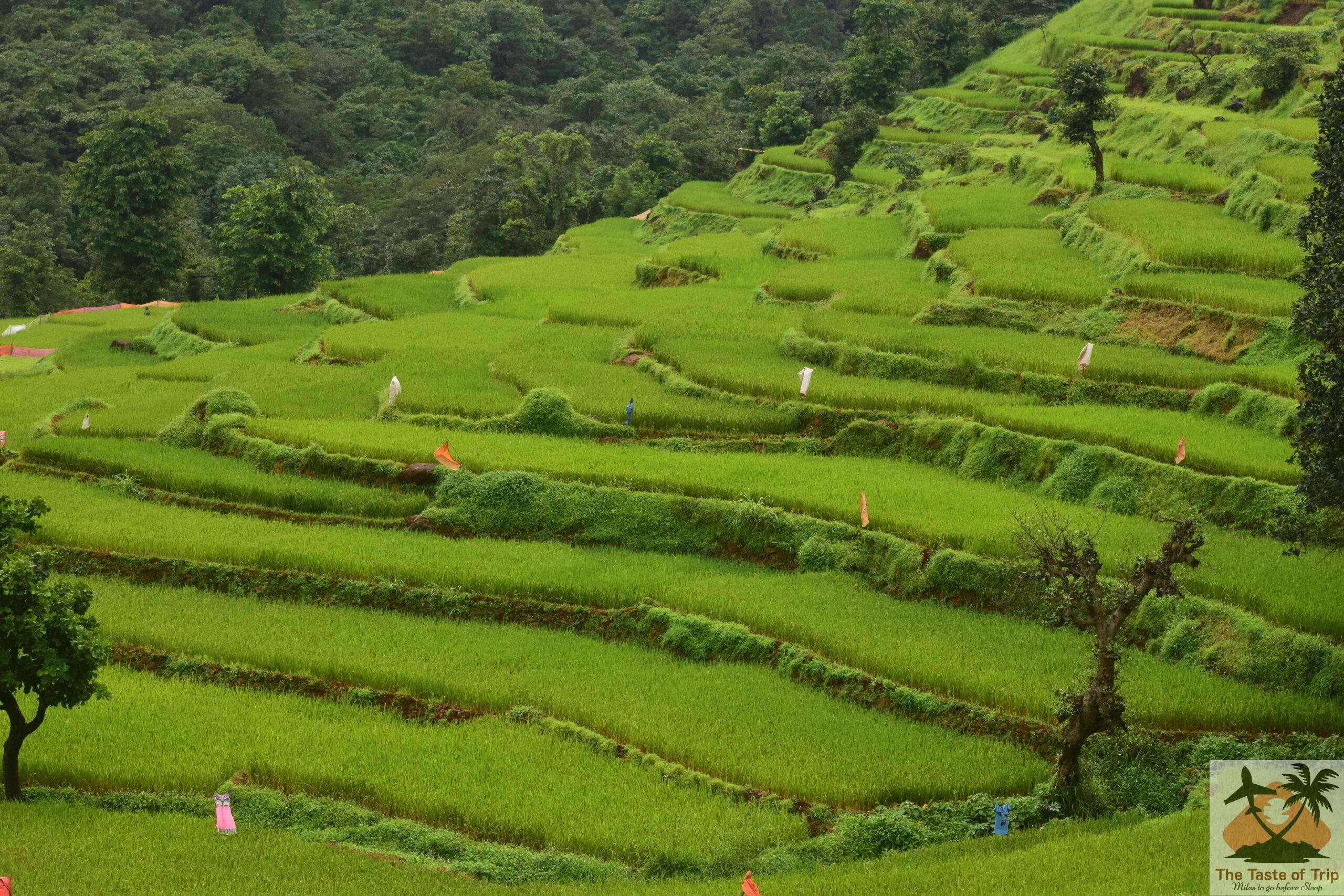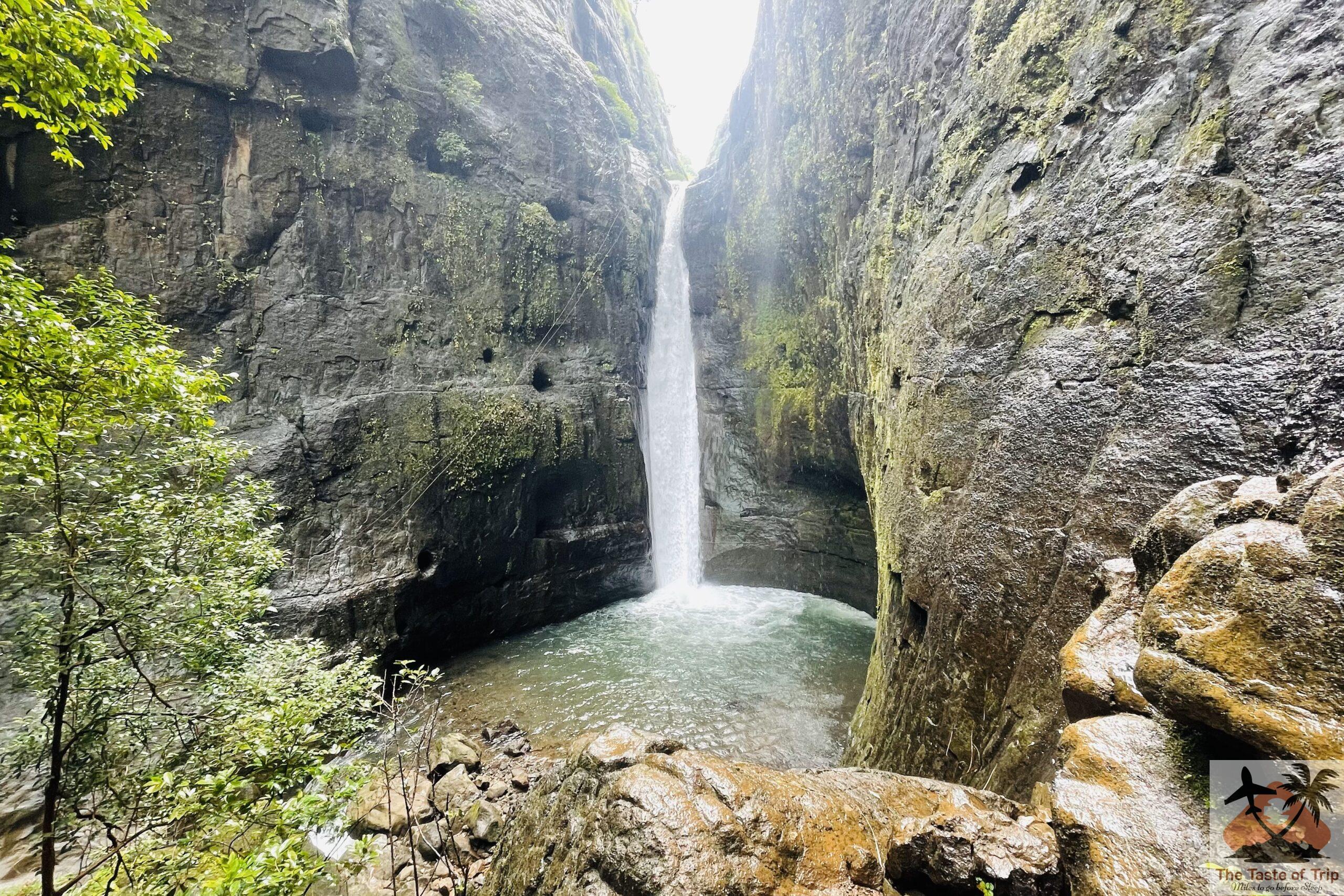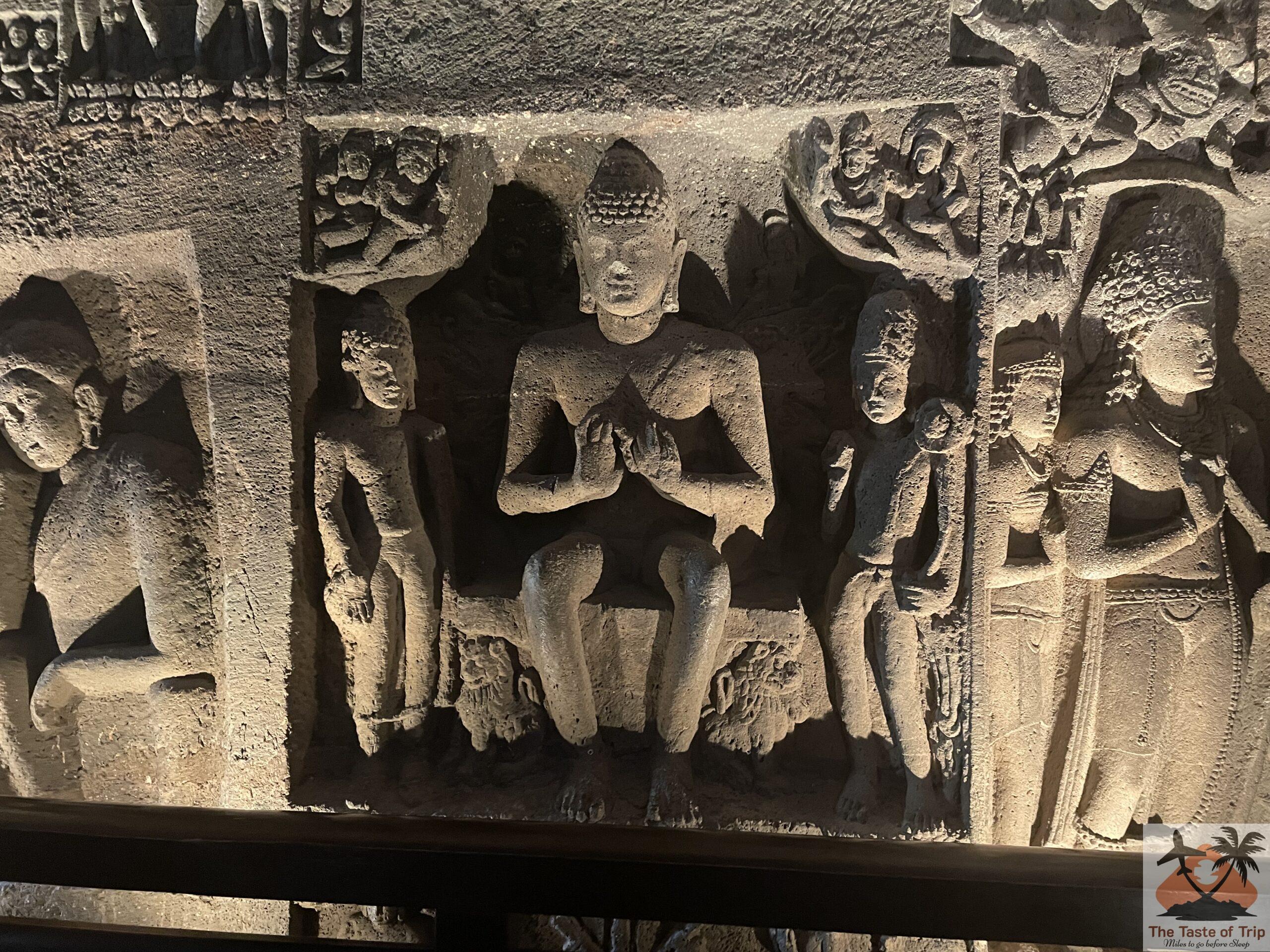Nestled on a hilltop in the quaint town of Jejuri, just 48 kilometers from Pune, stands the famous Khandoba Temple, one of Maharashtra’s most revered pilgrimage sites. Known as the “Jejuri Gad” by locals, this temple is dedicated to Lord Khandoba, a fierce form of Lord Shiva worshipped as the guardian deity of Maharashtra. What makes Jejuri truly unforgettable is its golden glow. The ritual of offering turmeric (Bhandara) transforms the entire town into a sea of yellow, giving it the fitting title of the ‘Golden City of Maharashtra.
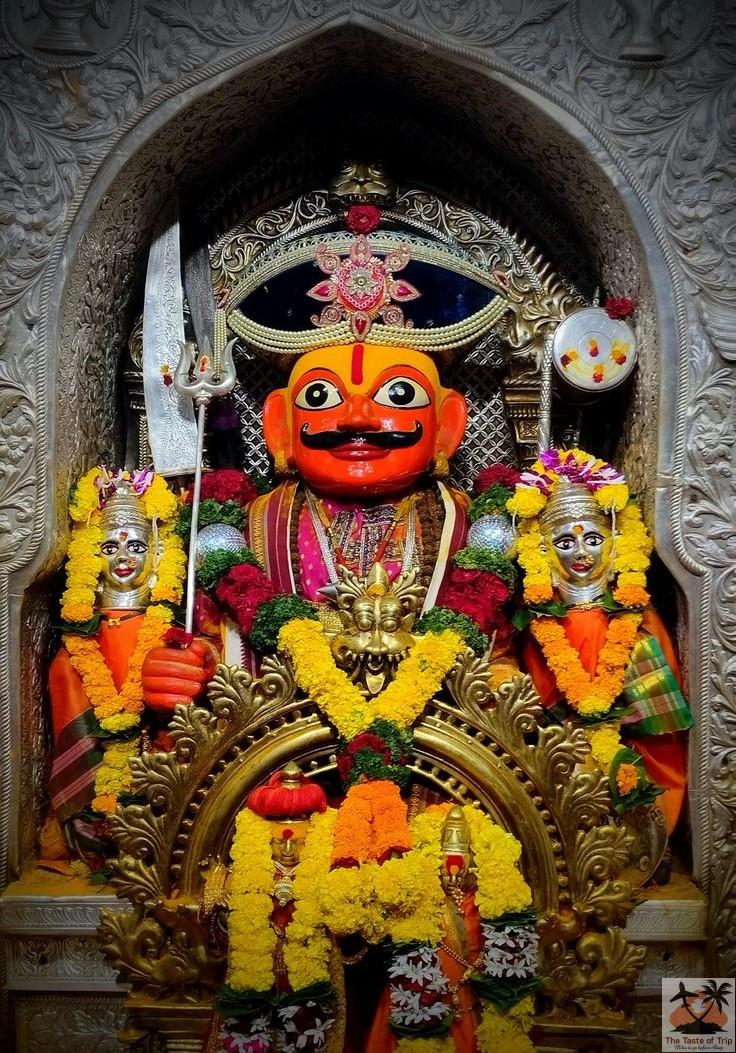
➥Mythological and Historical Significance
Lord Khandoba, also called Malhari Martand, is believed to be an incarnation of Lord Shiva. According to legend, he appeared to vanquish two demons, Mani and Malla, who were wreaking havoc on earth. After a fierce battle, he defeated the demons on the hill where the temple now stands.
As a mark of surrender, the demons offered their daughters in marriage to Lord Khandoba. Thus, the deity is worshipped along with his two wives, Mhalsa (from Karnataka) and Banai (from the Dhangar community). This story reflects the deep cultural unity in the region, where devotees from all castes and backgrounds come together in devotion.
Historically, the worship of Lord Khandoba at Jejuri can be traced back to the Yadava dynasty, when the deity gained prominence as a form of Lord Shiva. However, the present hilltop temple structure took shape much later, with major developments carried out by Maratha rulers and further expansions under the Peshwas and the Holkar family.
It is also believed that Chhatrapati Shivaji Maharaj visited Jejuri to seek Lord Khandoba’s blessings before embarking on crucial campaigns. This legacy makes the shrine not only a spiritual center but also a proud symbol of Maharashtra’s cultural and historic heritage.
➥The Fort Temple of Jejuri
The Khandoba Temple Jejuri is a marvelous example of medieval Deccan temple architecture. Built with stone, the temple has fort-like features with massive stone walls, numerous gateways, and courtyards that resemble a fortress more than a temple. The climb to the main sanctum begins at the base of the hill, where a beautifully carved stone idol of Nandi (the sacred bull of Lord Shiva) greets devotees.
To reach the top, one has to climb nearly 200 steps. These wide stone staircases, lined with railings, guide the devotees towards the sanctum. Along the way, small shops sell flowers, coconuts, sweets, turmeric packets, and snacks, adding to the lively atmosphere of pilgrimage. For newlywed couples, visiting Khandoba Temple Jejuri is considered auspicious. They often climb the steps together to seek Lord Khandoba’s blessings for a happy and prosperous married life.
Stepping inside the Khandoba Temple Jejuri feels like entering a sacred fortress of devotion. The complex is spread out with multiple courtyards, pillared halls, and several smaller shrines dedicated to different deities, each adding to the spiritual aura of the place.
The central sanctum (garbhagriha) houses the revered idol of Lord Khandoba, magnificently portrayed as a warrior seated on a horse, holding weapons in his hands, symbolizing protection and victory over evil. The sanctum is often filled with clouds of golden turmeric powder (bhandara), offered by devotees as a mark of prosperity and gratitude. This creates a surreal atmosphere, where the idol appears bathed in shimmering gold.
Apart from the main sanctum, the temple complex includes shrines of Mhalsa and Banai—his spouses—along with smaller mandirs for Nandi, Shiva, Lord Ganpati other local deities. Tall stone pillars, intricately carved arches, and spacious mandapas give the interior a grand yet serene feel.
The location of the Khandoba Temple Jejuri adds to its uniqueness. Perched atop a hill, it commands spectacular views of Jejuri town and the rolling valleys around it. From afar, the temple appears like a grand fortress crowning the hill, its stone walls blending seamlessly with the rugged landscape.
➥Festivals, Rituals & The Yellow Color of Prosperity
One of the most distinctive traditions at Khandoba Temple Jejuri is the offering of turmeric powder (Bhandara) to Lord Khandoba. Unlike most temples where vermilion or kumkum is used, here turmeric is considered sacred, symbolizing prosperity, fertility, and well-being.
During major festivals, especially Somvati Amavasya and Champashashti, the temple transforms into a golden spectacle. Devotees shower turmeric into the air, smear it on one another, and offer it at the deity’s feet, turning the entire complex into what looks like a sea of gold. The sight of thousands of worshippers glowing in yellow, with bells ringing and chants of “Yelkot Yelkot Jai Malhar” echoing through the hills, is both divine and mesmerizing—making Jejuri one of the most photogenic and spiritually charged pilgrimage sites in India.
The most important celebration here is Champashashti, observed in the Hindu month of Margashirsha (November–December), which commemorates Lord Khandoba’s victory over the demons Mani and Malla. During these six days, the temple witnesses lakhs of devotees, elaborate rituals, processions, and spectacular showers of turmeric that drape Jejuri in golden hues.
Beyond grand festivals, the temple also plays a role in life’s milestones. Newlyweds climb the steps together to seek blessings for prosperity, harmony, and fertility, while many families bring their young children for the sacred first hair-cutting ceremony, believing it to bring divine protection. These traditions keep Jejuri not only a place of worship but also a living center of cultural and spiritual heritage.
A visit to Khandoba Temple Jejuri is not merely a pilgrimage-it is an immersive journey of devotion, culture, and discovery. The experience begins at the bustling marketplace at the foothills, where vibrant stalls overflow with garlands, coconuts, sweets, and turmeric-the temple’s most sacred offering. As you ascend the broad stone stairway, devotional songs echo in the air, the fragrance of freshly prepared local snacks drifts through the crowd, and the sight of pilgrims dressed in bright yellow creates an atmosphere of festive devotion.
With every step, anticipation builds until, at the summit, you are rewarded with a rare harmony of spiritual energy, historic grandeur, and breathtaking natural beauty-an experience both soul-stirring and unforgettable. The Khandoba Temple at Jejuri is far more than a shrine-it is a living testament to Maharashtra’s faith, history, and heritage.
Rooted in mythological legends and enriched by centuries of tradition, the temple captivates with its golden turmeric rituals, majestic fortress-like architecture, and sweeping hilltop views. It is a place where devotion meets culture, and where history blends seamlessly with spirituality. Whether you arrive as a pilgrim seeking blessings, a heritage enthusiast tracing Maratha history, or a traveler drawn to unique cultural experiences, Khandoba Temple Jejuri promises to leave you awestruck and deeply enchanted.
**************************
➜ Don’t Miss at Jejuri Khandoba Temple: Experience the famous Bhandara ritual, where turmeric showers turn the temple golden during festivals. Admire the majestic hilltop architecture with fort-like stone walls, courtyards, and pillared halls. Visit the shrines of Mhalsa and Banai, along with smaller temples of Nandi, Shiva, and Ganesha. Don’t miss the panoramic views of Jejuri town and surrounding valleys from the hilltop.
➜ How to Reach Jejuri: Jejuri is about 48 km from Pune and is well connected by road. Regular buses and private taxis operate from Pune and nearby towns. Jejuri also has a small railway station on the Pune-Daund line, making it easily accessible. The nearest airport is Pune International Airport.
➜ Best Time to Visit Jejuri: The temple can be visited year-round, but Champashashti (November–December) and Somvati Amavasya are the most vibrant times, with lakhs of devotees and grand turmeric celebrations. Winter months (October–February) are pleasant for climbing the steps and exploring the temple.
➜ Time Required to Explore Jejuri: Set aside half a day for the pilgrimage-time to climb the steps, participate in rituals, explore the shrines, and enjoy the scenic views. During festivals, expect to spend a full day due to large gatherings and celebrations.
Information Source: Authentic information sources available on internet, Various Articles and books on the subject, official sources of govt & Interaction with local public.
For more information & feedback write email at : ikanchan2024@gmail.com
